




LEARN MORE...
WE STRIVE FOR NOTHING LESS THAN CUSTOMERS FOR LIFE.




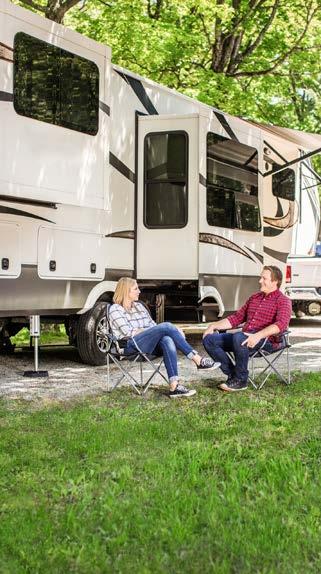
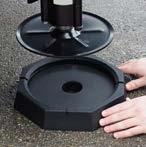
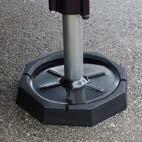

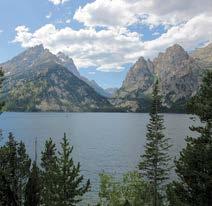

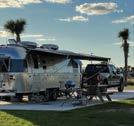

Sara, the super collies mom, is one of the top international trick dog trainers and has received several awards showcasing her impressive achievements in the dog world. Her dogs have earned many agility titles and are savvy in dock diving, frisbee and canine freestyle. She and The Super Collies have appeared on The Late Show with David Letterman, America’s Got Talent and continue to captivate audiences worldwide. Sara and her furry crew live full time in a Jayco Redhawk Class C Motorhome and spend their days traveling, teaching dog trick workshops and winning dog trick championships around the globe!
@thesupercolliesmom • @thesupercollies

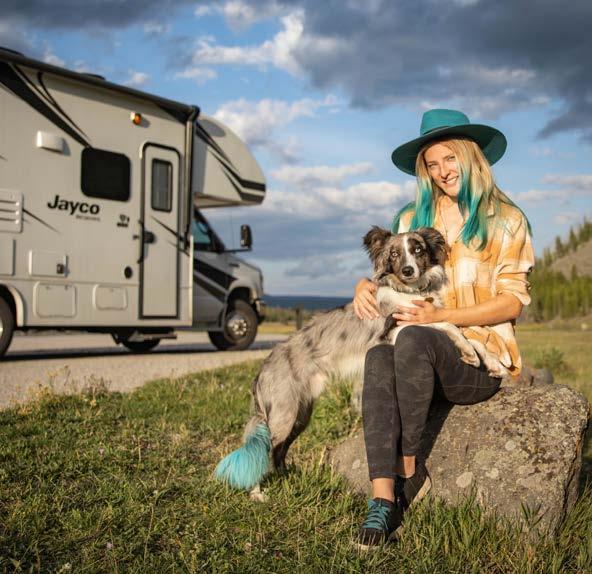

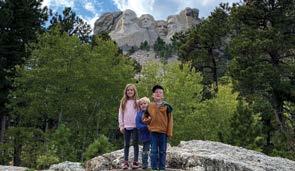

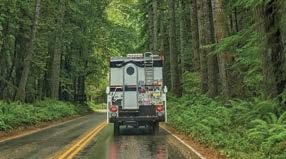
SUBSCRIBE
RV TODAY Magazine
Volume 1 I Issue 2 I April/May 2022
Publisher Demian Ross
Chief Editor Nikki Kirk
Managing Editor Jess Stiles
Editorial Assistant L Merredith

Art Director Gayle Schadendorf
Operations Manager Jamie May
Copy Editor Kristin Skaggs
Advertising Information sales@rvtoday.com
RV TODAY 3916 N POTSDAM AVE #3194, SIOUX FALLS, SD 57104
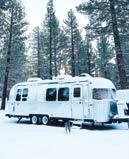
Disclaimer: One of the great things about digital publications is the ability to link you directly to the products or services you want to hear more about. Some of the links in this issue are affiliate links where we earn commissions on goods or services you buy. These commissions help us to continue to publish the magazine. RV Today is also a participant in the Amazon Services LLC Associates Program, an affiliate advertising program designed to provide a means for sites to earn advertising fees by advertising and linking to Amazon.com. If you have any questions please don’t hesitate to reach out to us at info@rvtoday.com
Copyright © 2022 DNI Group LLC. All Rights Reserved. Reproduction in whole or in part without written permission is prohibited. No responsibility is assumed for unsolicited submissions.
I was 46 years old the first time I hooked up an RV and hit the road. I had no experience, no one influenced me to do it, and I had zero clue what I was doing. I made plenty of mistakes along the way, but I’ve also had some of the greatest experiences. My only regret is not starting earlier.

Fast forward almost five years and I have now lived and worked in 48 states and probably logged more than 70,000 miles traveling. Though I’ve done more RVing than most people do in 20 years, even with all this experience, I’m still no expert.
I’m just a guy who fell in love with the lifestyle and freedom that comes with owning an RV, and I want to spread that message to as many people as I can, including weekend warriors, snowbirds, part-timers, some-timers, and even fulltime RVers.
Our goal at RV Today is to become one of the most trusted resources for everything about owning an RV. We also want to find ways to reach people who have no experience with RVs and expose them to this lifestyle.
I find it odd that people are upset by how crowded it’s getting at campgrounds and RV parks, but also might complain that families are not spending enough time together “like we used to.”
RVing is a great way to get away and have quality time with family, as a couple, or by yourself. With demand comes a shortage of supply, but it can also bring a boom, and I think we will see more and more new parks and campgrounds being built to meet that demand.
I get that being full-time is a little unique. One of my hopes is that with more people going to remote or hybrid working schedules, we’ll see people loading up and hitting the road on a Thursday night, working Friday from the campsite, and then being able to relax for the weekend as soon as they clock out on Friday because they’re already there.
Like I always say, the worst times I’ve ever had in a campground were better than the best times in a cubicle or office.
Hope to see you out on the road soon.
demian@rvtoday.com
P.S. We would love to hear from you, including suggestions for stories or regular features, letters to our editor, or ideas for what you’d like to see. Let us know what would help you and other RV owners in the future.
@_neverstopadventuring

ʹTo show the country to our kids and make memories as a family.ʹ

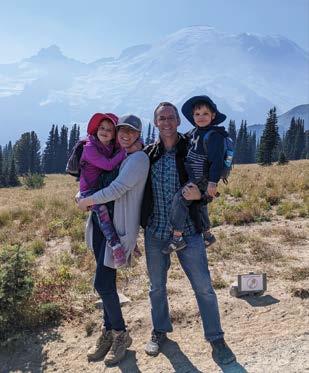

ʹTo live simply and explore often.ʹ
@stillonthegofam
ʹFreedom, intentionality, family time, adventure, and discovery, to name just a few reasons!ʹ
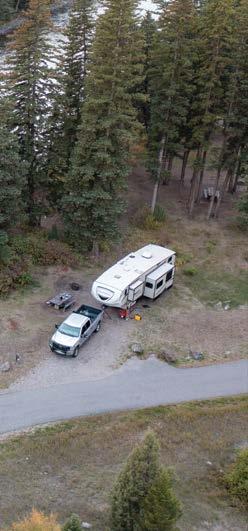
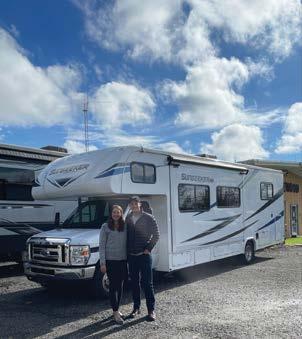
@ourmobilejourney

ʹTo see the beautiful USA.ʹ
@mndee2017
ʹFreedom and adventure!ʹ
@gillfiles
ʹTo explore, make memories, and learn.ʹ
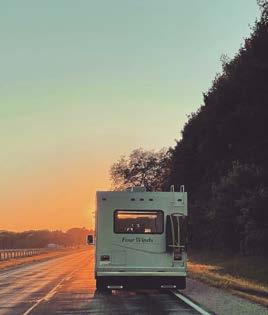
ALWAYS MOVING FORWARD. ALWAYS MAKING YOUR EXPERIENCE BETTER.
Whether you’re on the road or on the water, Lippert supplies a broad array of premium RV, towing and marine products designed to enhance all of your recreational pursuits. Our team is always thinking about your next journey — pushing the possibilities of our products and services, all to better your time spent outdoors, whenever, wherever, for years to come.
lippert.com
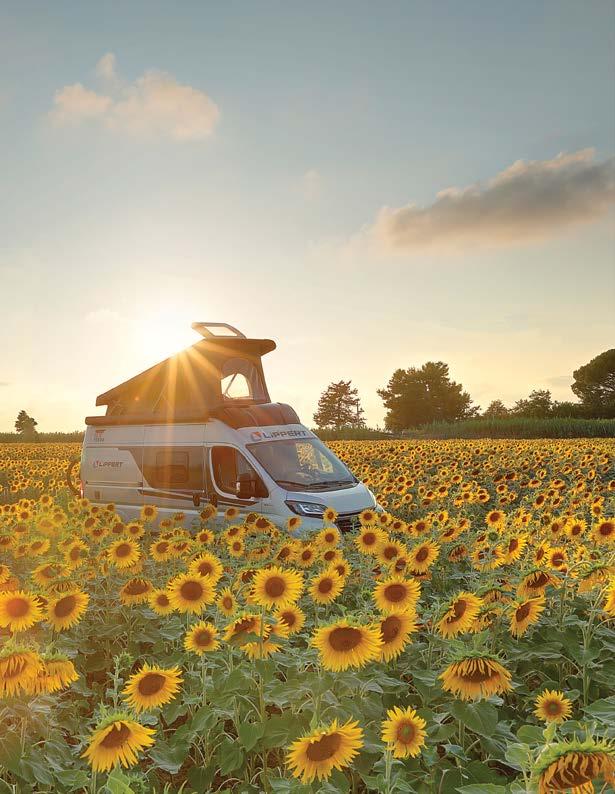
When you’re traveling and camping in your RV, the last thing you want is to waste time fiddling with stock RV items that aren’t really optimized. We’ve collected some easy and affordable upgrades that can be done with little effort and are sure to enhance your RVing experience.

While not the most fun project, it is very rewarding to enhance the roof seals on your RV. Anyone who has had a roof leak can tell you trying to find and patch a leak during a torrential downpour is an absolutely terrible experience. Get ahead of the potential problem by adding an easy-to-apply roof tape to all of your roof seals for extra peace of mind.
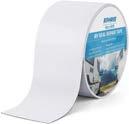
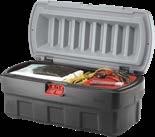
Keeping your camping gear organized and easily accessible makes your camping adventures so much more enjoyable. Find durable storage bins that maximize the storage lockers under your RV, and try to find bins that aren’t so big they get too heavy to lift when full. Label your bins so you know what’s in each one, and try to put everything back in the right bin at the end of your trip so setup is easy on the next one!

Not everyone loves cooking while camping, but for those who do, you’ll probably want to upgrade your RV kitchen with a cabinet spice rack. There are several different kinds available to fit the spice containers you prefer, and they mount easily to the door of a cabinet or the wall of a cupboard.
Speaking of lighting, the stock lighting in an RV isn’t always enough to brighten certain areas. Wireless, rechargeable LED lights are available in many different shapes and sizes to supplement the lighting you have. Some even have motion sensors to help light areas only when you enter them, which can be great for deep cabinets, closets, or the kitchen at night.

Another easy upgrade to your RV kitchen is a stove top cover, which helps to expand your counter space and keep crayons from rolling into your stove top. Usually made from butcher block, these inexpensive covers do double duty as cutting boards or serving trays.


No one who has ever dumped a black water tank will tell you they enjoy the process. Even after a thorough dump and tightening the valve as much as possible, there’s always a little dribble of gross water the next time you open the valve. If you add an extra waste valve, you can avoid that unwanted experience altogether.



Admittedly, this is not always an affordable solution, as cell phone signal boosters can vary widely in cost, but if you often need to be available while road tripping, it is a worthwhile investment. Signal boosters work with any cell service provider, and simply enhance the signal you are getting anywhere. You don’t have to pay a monthly fee; it’s just an antenna you put on your vehicle that drives a signal to a receiver in the RV. Unfortunately, a signal booster won’t give you service where you don’t have any at all, but for places where signal is weak, it will amplify the signal to something that is usable
If you’ve used a stock RV showerhead, you know they leave a lot to be desired. The nice thing about a high-pressure showerhead made for RVs is that they are also made to conserve water. This doesn’t matter if you’re hooked up in a campground, but if you are boondocking without hookups, a low-flow, high-pressure showerhead will be your best friend.
If you use propanepowered camp items, such as an outdoor cooktop, a heater, or a fire pit, this quick-connect hose will allow you to use the propane tanks on your RV instead of carrying extra tanks for those items.
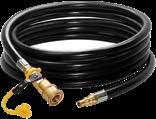
LED light bulbs are becoming standard in many RVs, but if you’ve recently purchased an older RV, replacing the traditional light bulbs with LED bulbs will help brighten and update the interior. LED bulbs for RVs are different from those used in homes, so be sure to buy light bulbs made for RV use. ■


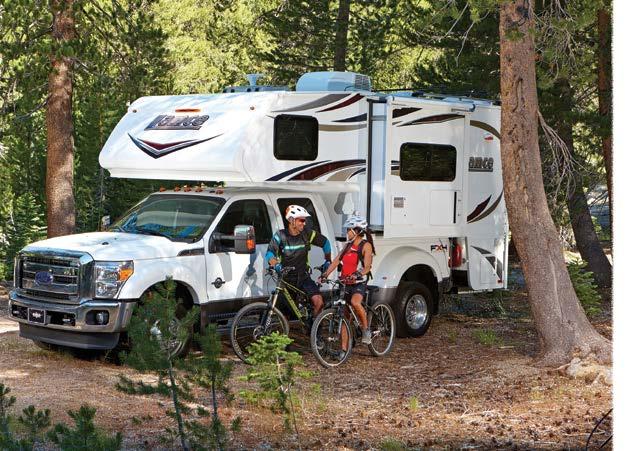
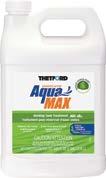



QUESTION: If you are an “occasional camper,” going out for weekends or small trips here and there, do you drain your black and gray tanks between trips?




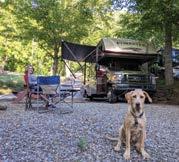

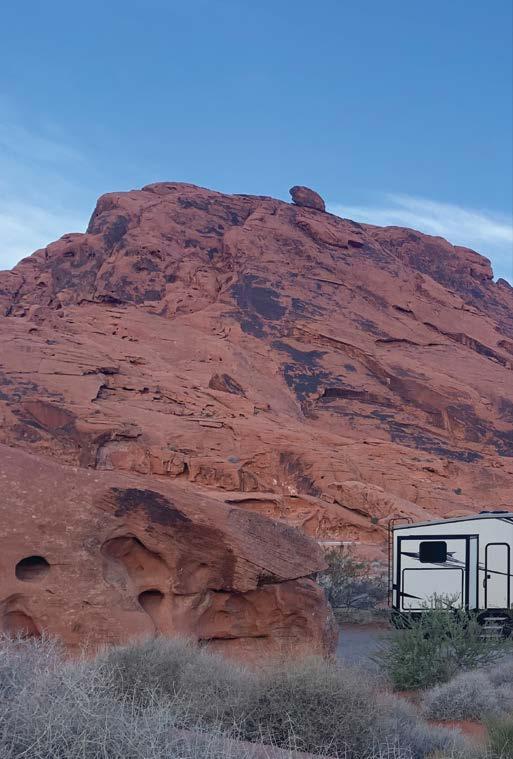


Most travel trailers, fifth wheels, and motorhomes develop a belly in the black and gray tanks that retains waste and sludge and is almost impossible to flush out with regular dumps, even when you flush it “clear” as you’re dumping (think of that heavier-than-water sludge like a “beach” in your tank, where the water flows right over it).

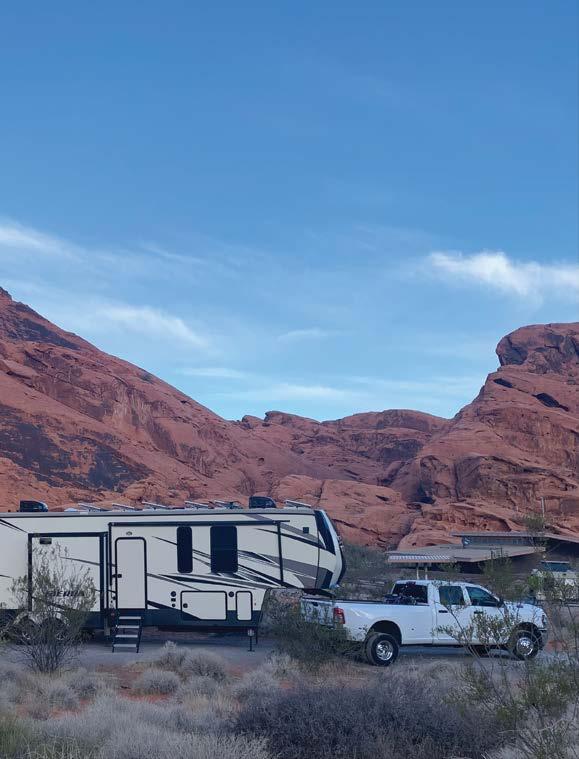
So even if you drain the tank dry after flushing it clear, you likely have a heavy layer of sludge and residue of whatever chemical tank treatments you have used sitting in the belly of your tank. When dry, this sludge will now form even more quickly into struvite (a hard mineral deposit that is basically like rock) that becomes a solid layer in your tank.
Unless you know that your tanks are fully clean, leave a little water and an RV tank treatment called TankTechsRX in them between usage. TankTechsRX is a probiotic formula that consumes the sludge, lightens the load in your tank, and reduces odor.
Even better, have your tanks professionally hydrojet cleaned to remove this layer of sludge and struvite, and then use TankTechsRX to keep your tanks healthy and clean between professional maintenance cleanings.

Sue Rasmussen is a Certified RV Technician who specializes in cleaning black and gray tanks. She loves to share info on how to keep your RV tanks healthy and clean. For more information or to contact Sue, visit royalflushrv.com. ■

Whether your to-do list gets away from you, or some time on your calendar frees up, you will likely end up having to book a campsite at the last minute at some point. Many popular campgrounds require reservations months in advance, but with these expert tips, you might still be able to snag an epic campsite for your trip.

Use a reservation website.
KOA.com, goodsam.com, and campspot.com all allow you to book campsites from one reservation system rather than searching individual campground websites. From tent or RV sites to a room in a lodge or your own cabin, the reservation system pulls inventory from thousands of destinations to match your query.
Be flexible on destination. Try a backcountry or walk-in campsite.
Some campgrounds offer walk-in sites that provide space for a tent with a picnic table and a fire pit. Many walk-in sites aren’t far from the parking area at all, so if you’re really set on camping, but can’t find anything for your RV, you could pack up the tent and a cooler for the weekend. Roughing it builds character, right?
Fellow RVers in your community are a great resource for finding campsites for any and all types of campers. Boondocking groups can help you find spots that are off the beaten path, and local RVer groups may be able to share insider information on how to get into campgrounds in their area.
Have backup options.
This option isn’t for everyone, but even campgrounds that get booked up months in advance have no-shows. Some campgrounds will let walk-ins stay at these sites under the condition that you leave if the original booker shows up.
Just show up.
Many RVers rely on additional options for camping, such as Harvest Hosts, Boondockers Welcome, or HipCamp. In addition, you can find free boondocking spots like WalMart parking lots or public land by using apps like iOverlander or campendium.com.
Government campgrounds are administered by reserveamerica. com and recreation.gov. People tend to make reservations way ahead of time, then cancel due to a change in plans as the reservation gets closer. Check back on the Reserve America website often to see if dates have opened up.
There are
many state and national park campgrounds that have a certain number of campsites set aside specifically for walk-in campers with no reservations. While some of these campgrounds will have people lining up at 5 a.m. (looking at you, Glacier National Park), many are not so difficult to get into. Call the park to find out more details on availability of sites for this purpose and to get a general sense of how hard it is to snag one.
It’s no surprise that most campsites are booked on the weekend. If you have the flexibility to be able to camp during the week or during the school season, you’re likely to have better luck booking a campsite in a popular campground.
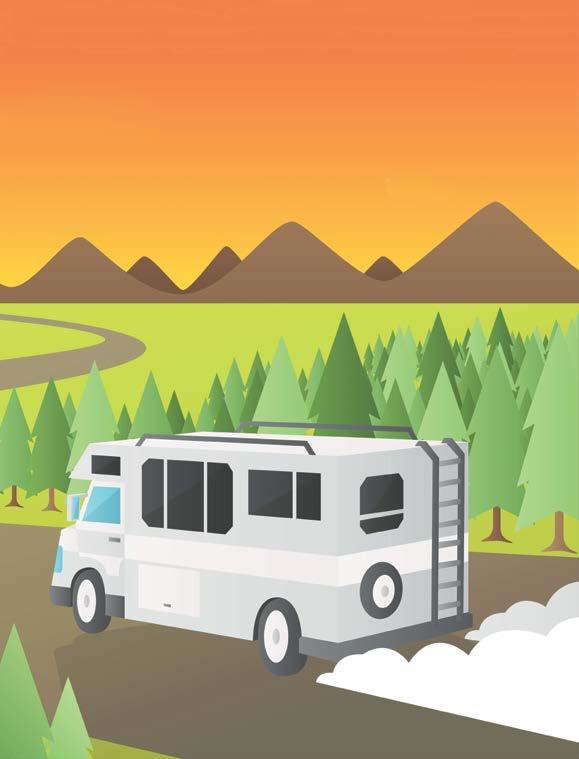
If your preferred area is all booked up, be flexible and look for a campground somewhere else. Expanding your search radius by one or two hours can open tons of new camping opportunities. If this sounds like a bummer, keep in mind that staying somewhere else may be the difference between getting out there and camping versus skipping the trip altogether!
This only helps those who have served, but they are a great option for current and retired service members. Eligibility for staying at these campgrounds may vary, as they are more or less run independently. Be sure to check in with the specific campground you would like to visit to verify that you are allowed to camp at the facility with your credentials. ■

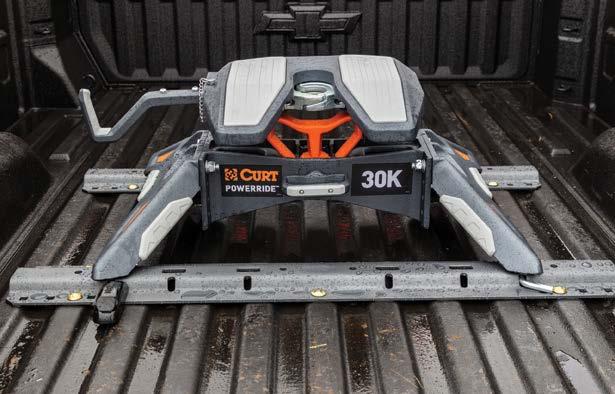
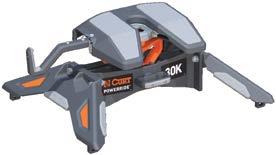 By Karla Locke
By Karla Locke
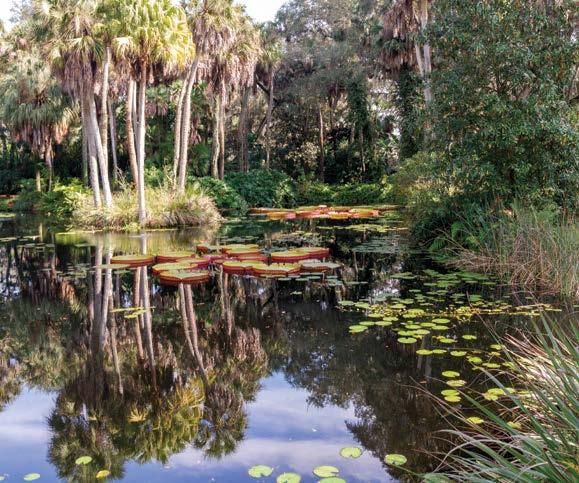
We are from the beautiful state of Washington, a couple of hours north of Seattle, where winters are often gloomy, wet, and dark. Sunshine in the winter is a rare occurrence. Just like many people from cold, northern climates, for their health and sanity, some people from our area become snowbirds, traveling to warmer destinations for the winter season.
Winters are rough for people like me with seasonal affective disorder—the short days and constant lack of sunlight can wear you down quickly. So when the opportunity to become a snowbird arose, I jumped at the chance.
Many folks from the Pacific Northwest migrate to Arizona or Palm Springs, which feels natural! So when we purchased Betty Jo (the Airstream), we assumed we would join the flock in Arizona. Being new to RV life and hitting the road full time, it made sense to follow the path of others.
But the timing didn’t quite work out, and our course changed.
We hit the road for the winter season in mid-August.Because we are photographers, we had four destinations we wanted to visit on this first loop, ending in our winter camp for the cold season. We wanted to see Mount Rushmore in South Dakota, St. Louis, The Upper Peninsula in Michigan, and the Great Smoky Mountains for fall colors.
We finished our visit to the Great Smoky Mountains at the end of October, which was a bit late in the season to start the trek back west to Arizona. Since we were closer to Florida, we decided to try the Sunshine State for the winter.
As newbies, we definitely aren’t experts and are still in the learning phase when it comes to planning for a winter season south. Even so, we’d like to share the 10 things we learned during our first season as snowbirds.
PLAN WAY AHEAD— Many RVers plan a year in advance when it comes to migrating to Florida for the winter season. They have their favorite park and their favorite site and often stay for four to six months. They come for the weather, the sunshine, and the camaraderie with other seasonal visitors. Because we did not plan ahead, we ended up having to move several times throughout the season. I wasn’t able to get a site for the whole season due to them being fully booked by repeat visitors.
STAY LONGER— Many RV parks offer discounts to seasonal snowbirds. The longer you stay, the more you save. Since this was our first season in Florida, we decided to stay about a month in each place to give us time to explore the areas and enjoy more downtime. This also gave us the opportunity to do some maintenance on our Airstream. Moving about once a month was also nice since we still had so much to see and explore throughout Florida.
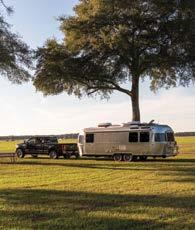
VISITOR VS. RESIDENT—The official term for snowbirds is “winter visitors.” Many winter visitors become permanent residents after a few seasons due to the favorability of Florida residency, but they still travel and head north to cooler climates in the summer. After just two months into our first season in the Sunshine State, we were considering permanent residency in Florida. We’re not sure we could handle the summers, though!
TIME OF YEAR AND DEMAND INCREASE—

Site prices increase during peak times, often by 50% or more, especially in more popular locations such as the Florida Keys. Rates will often start around $2,000 per month and increase from there, depending on the amenities at the park and its location. RV parks in the Keys and more popular areas on the coasts will charge $3,000-plus per month.

TRY CENTRAL FLORIDA— Many RVers in our Facebook groups suggested we try central Florida. They explained there were more parks with openings when reserving late in the season and they were often more affordable. This gave us the opportunity to explore the area around Lake Wales. Its central location is also a good home base for day trips to the Gulf Coast or the Atlantic Coast, depending on what you want to do that day.
FINDING THE BEST PRICE—Two of the parks we stayed at were relatively new and located in central Florida. I found them via a Facebook ad, and they were offering great deals to entice newcomers to try them out since they were newer parks. Not only were the prices terrific, but the parks were quite nice, with great amenities, activities, and staff.
Haystack Farms Tony and Karla Manatee and Fort WildernessAMENITIES VS. ACTIVITIES—Amenities are nice, but activities are great. I found I most enjoyed parks that offered a variety of activities. One of the new parks we stayed at in Central Florida offered stretching, yoga, pickleball for beginners, walking groups, and a wood shop. In addition, there were staff members who could help with minor RV maintenance. Almost all the parks in the Sunshine State have pickleball courts, and some even have tournaments! I had not heard of pickleball until I became a snowbird. I may need to take one of those beginner pickleball classes at some point.
SUNSHINE— For us, the goal of snowbirding was to find sunshine, and lots of it. We definitely found it in Florida. Where else can you eat outside in the middle of winter, sit on a pier drinking piña coladas while soaking up the warmth of the sun, and spend Christmas day cooking outside and eating dinner under the stars while listening to Christmas music?
BE A TOURIST— Florida has so much to offer and it does not all have to be seen in one season. During our season snowbirding, we left Betty Jo (the Airstream) behind and found a hotel down by the Keys. We wanted to bring the RV and stay down there, but RV parks were full and more than $200 per night. Instead, we spent two days driving around
the Keys. The highlight of this short excursion was an item at the top of our bucket list—an airboat tour in the Everglades. We chose Down South Airboat Tours, a company that does private tours and creates an experience, not just a typical tourist ride. I highly recommend them and the experience.
When we chose Florida for our winter snowbird destination, I was a tad worried I might not really like it there, but as it turns out, I didn’t need to worry. I would definitely like to winter in Florida again, only this time I’ll plan ahead. ■

In 2021, Karla and her husband Tony sold it all, bought Betty Jo (the Airstream), and hit the road. As photographers with a bucket list of images to be captured, they started by traveling from the northwest corner of the United States to the southeast corner. You can discover more about their journey on Instagram @bettyjotheairstream or storiesfrontporch.com
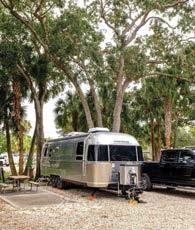
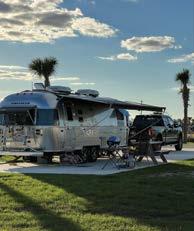
 Resorts at Canopy Oaks
Resorts at Canopy Oaks
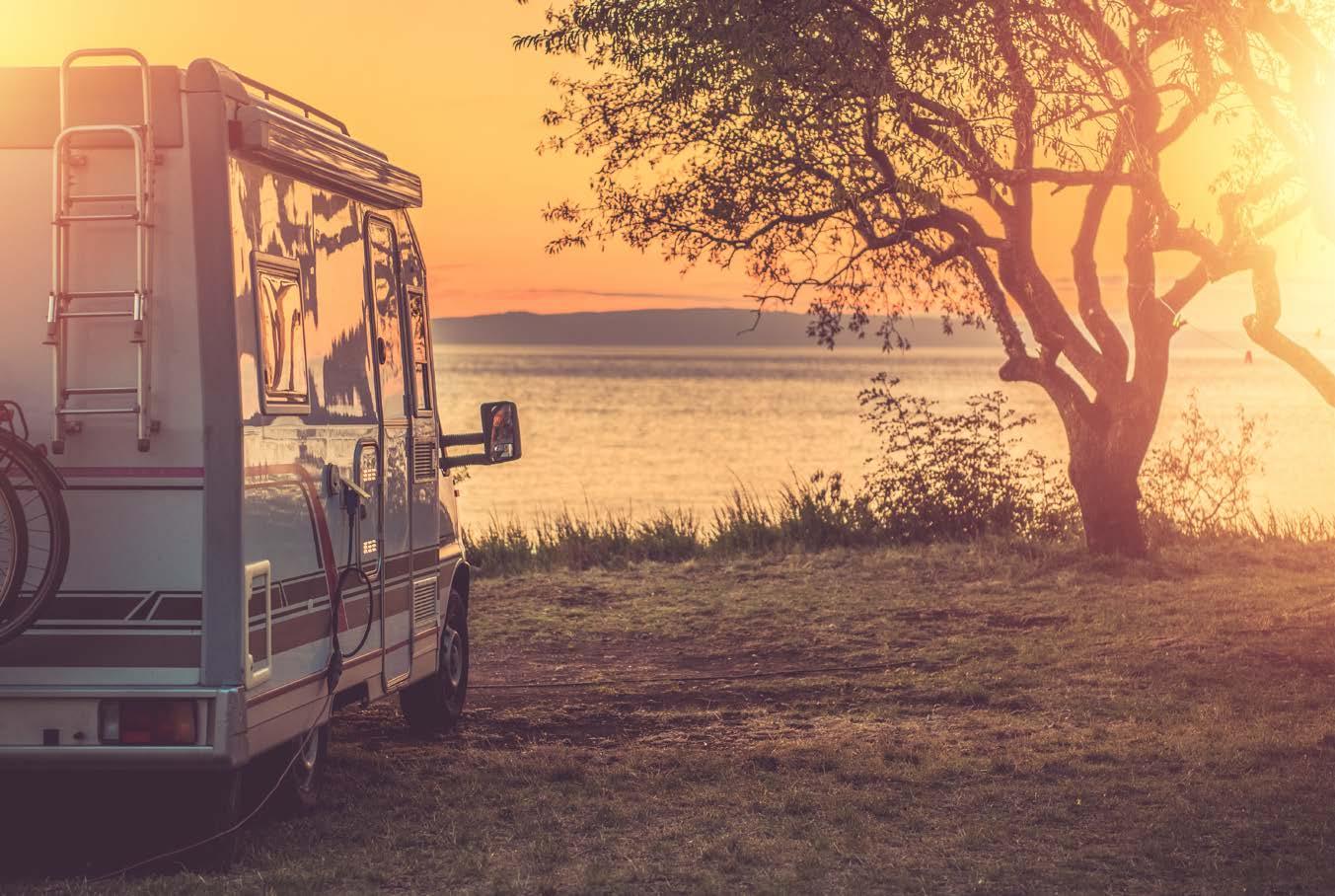
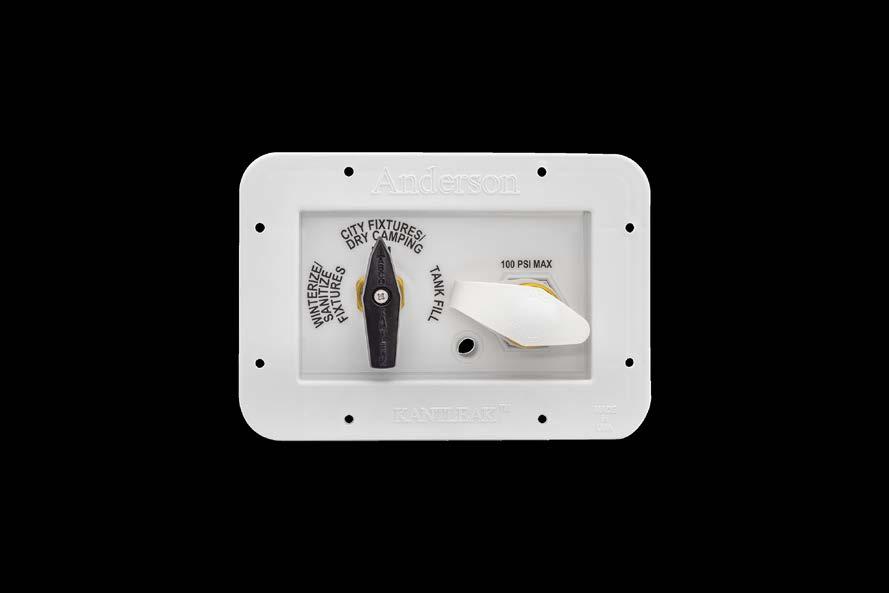

Something funny happens when I tell people I love to camp. They raise their eyebrows, they get a little sparkle in their eyes, and you can almost see the images streaming through their mind.
As soon as the word “camp” comes out of my mouth, the person on the other side of the conversation is imagining sleeping in a hammock off the side of a cliff, or backpacking for weeks along the Appalachian Trail. While I’m sure those experiences are spectacular, they’re not the type of adventure my family seeks.

When I almost apologetically explain that we camp in our RV—an RV we don’t even live in full time—that’s when the disappointment sets in. RVing isn’t a real adventure, is it? It’s just traveling with a home on wheels to a place that gives you hookups.
Many people define adventure by what they see online or on TV. And trust me, I’m not immune to the comparison game in the outdoor world—one glance through a catalog for gear and I immediately start to question if the products are for me.
I’ve never considered myself to be the rugged type.
As someone born and raised in Arizona, I shiver when temperatures dip below 70 degrees. Seeing a bug causes my heart rate to spike instantly. My husband takes the dog out in the middle of the night while we RV because I’m afraid of the dark.
Still, I consider myself adventurous, and I believe you should proudly wear the label “adventurous” too, because you can define your own adventures.
The term “adventurous” is defined as “willing to take risks or to try out new methods, ideas, or experiences.” Given such a broad definition, it’s perhaps easier to define adventure by what it isn’t. Being adventurous isn’t about sticking to a rigid routine. It isn’t about avoiding new experiences.
So anytime you’re willing to push your comfort level a little bit and try a new experience, you get to iron on the badge of adventure. Even when that nudge outside your comfort zone is gentle, you’re still rolling up your sleeves and entering the unknown. With that definition in mind, it’s hard to limit adventure to black diamond ski slopes.
Adventure isn’t about what you do; it’s about your mindset while doing it.
Our societal view of adventure sometimes leads us to believe adventure only exists in the corner of the world where the most hardcore outdoor enthusiasts hang out. That isn’t true. An adventurous spirit exists inside our souls and comes to life each time we say, “let’s see what happens.”
The unknown is scary. Not knowing what will happen on a trip, what the weather will be like, or what the road holds requires you to adopt a mindset of agility and grit.
For example, while I am not fond of deep water, I’ve found myself doggie paddling around a cave knowing there was a large but “friendly” snake in the water, snorkeling with reef sharks within touching distance, and learning how to scuba dive. Even though there was a guide present for each of those experiences, I still had to be willing to take a risk and try something new. File them under the bucket of adventure.
The same is true for camping. RVing at a resort-style campground is adventurous when you’re hitting the road in your RV for the first time. A full-hookup park is adventurous when you’re there to break out of your comfort zone and meet new people or experience something new. Dispersed camping

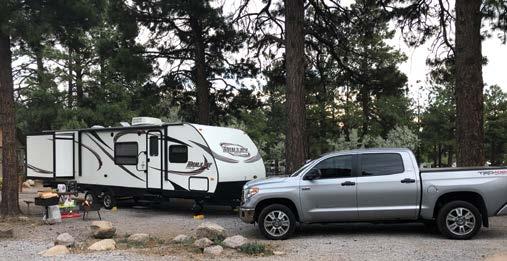

is absolutely adventurous—even with a generator in tow and air conditioning running.
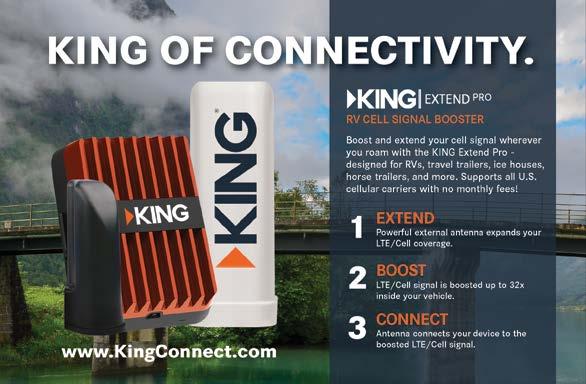
Because adventure is more of a perception than an actual thing, it’s also invisible. You can’t see how someone is feeling on the inside or know what about their history makes a particular situation adventurous for them. That invisibility means there’s no way to put adventure in a box.
Your adventure is defined by your own invisible reasons. What routine are you escaping from that prompted you to hit the road? Are you seeking to experience something new? Are you learning about yourself through adventure? Are you wanting to push forward through a particularly hard circumstance?
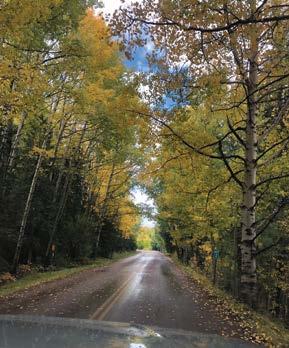
No one can answer these questions for you, which means no one can define what adventure looks like for you. Because of that, I argue the invisibility around adventure means the definition of what it is to be adventurous goes deeper.
ADVENTURE IS A VISCERAL EXPERIENCE—it’s the heightening of your personal senses in the midst of experiencing the unknown. It’s something you have to feel your way through. To understand what this looks like in travel life, take a look at the seven senses through the lens of RV adventure.
Sight: Seeing isn’t always believing—our eyes so often deceive us. Water looks deeper and darker when we’re in it. The night sky looks bigger when it’s filled with stars. Those roads you’re driving
on look narrower when you’re towing your rig. The way we perceive the world changes as we move into new territory.
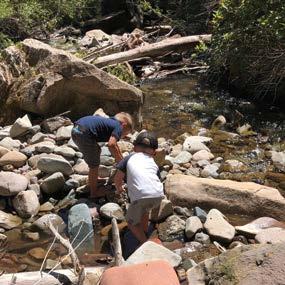

Taste: Have you noticed meals taste a little better when they’re cooked over a campfire? Or have you ever been to a new place and tasted new hot sauces, new spices, or a new salsa? The maple syrup is just a little bit richer when you cross the border into Canada, isn’t it? Each region has its own flavor, and that flavor can amplify our experience, adding to the adventure we’re seeking.
Smell: There’s a beautiful poem by Fatimah Asghar called, “Smell is the Last Memory to Go.” In it, she describes how scent is the last of the senses to disappear from our memory. Neurologists agree and have found that smell is the strongest and quickest memory inducer. It makes sense, then, that you can easily recall the smell of an extra smoky campfire on one trip or the scent of the morning air on another.
Touch: We have 3 million nerve endings and nerve receptors in our body. These receptor points allow us to quickly recall certain textures and tactile sensations, giving us a more intimate sense of what we’re experiencing in any given moment. Think about the coldness of the rocks you climbed, or the temperature of the water when you put your toes in the sand on the beach. Those senses are powerful and can amplify our feeling of adventure.
Hearing: On a recent trip, I got goosebumps. It was the first time I heard elk bugling in the forest. I couldn’t see them or smell them. Still, I knew they were close by. That noise will forever stick in my mind, just as vividly as the scratching we heard outside our RV later that night by a skunk trying to get into our sealed trash cans. Hearing heightens our sense of adventure and puts us instantly closer to nature.
Vestibular: If you were ever told to look up from your book as a kid so you wouldn’t get car sick while riding down the highway, then you know the power of the vestibular sense. This sense
is how we feel our way through the movement in the world— when our brain can’t make sense of the signals it’s feeling in our inner ears and eyes. The same is true for any mismatched signal. The feeling of falling is another one, which is why bungee jumping is such a thrill. The way your body moves through the world can heighten feelings of adventure, creating a more vivid experience in ways that are hard to express or understand.
Proprioception: This sense is our body’s ability to understand where we are in relationship with our surroundings. Some might also call this situational awareness. It terrifies me as a mother, as I watch my young child, who hasn’t yet developed this sense, climbing a little too high in a tree. When we experience something new, it can be hard to understand how our body position will impact our safety, which can heighten our feelings around the unknown.
Adventure isn’t all about what we’re doing—it’s about how we feel while we do it. The culmination of these seven senses will directly define our experience. Knowing that, we can break free from the comparison game and embrace new adventures with joy, enthusiasm, and excitement. ■
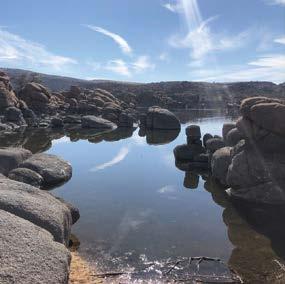
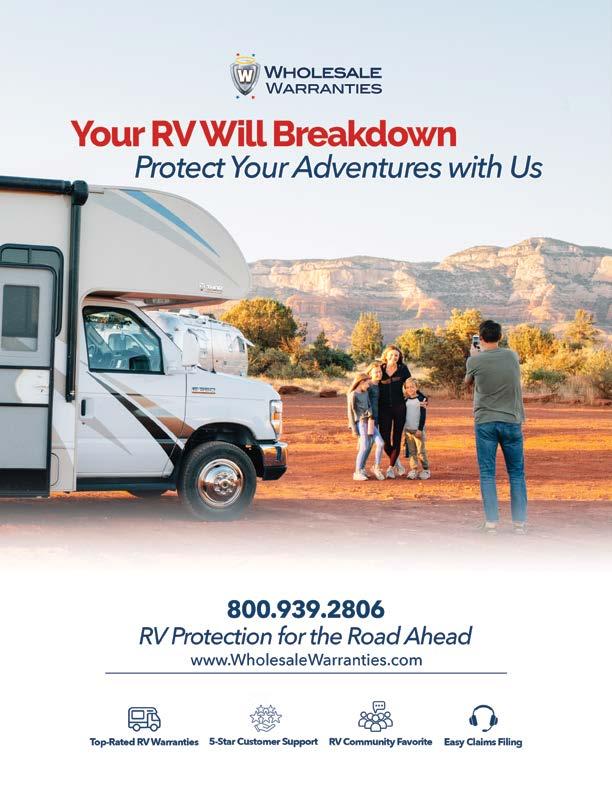
As the RV industry gains popularity, many rigs are going high-tech. From outdoor kitchens to full-blown security systems, it’s easy to get overwhelmed with tech jargon, and solar systems are no exception. We’ve asked our industry insiders to share answers to the most-asked questions about solar systems for RVs to help you get your research underway.

While you don’t have to use RV-specific solar panels on your RV, installing residential solar panels will present some challenges. First, you’re limited to how much space you have on the roof of your RV, and many residential solar panels are larger than RV solar panels.
Second, RV solar panels are typically made to work with a 12-volt system, whereas home solar panels are built to work with systems running 40–70 volts. The major issue here is that using a residential solar panel would inhibit you from using other RV-specific solar system components, like a Pulse Width Modulation charge controller, which is standard for RV solar systems.
RV solar systems follow a very simple order of operations. As the sun hits the solar panels on top of your RV, the panels collect the sun’s energy and turn it into electricity. This electrical current is sent into your RV through a charge controller. The charge controller maintains the current going into your battery bank so the batteries don’t get overcharged. Your batteries store the power the solar panels have collected until your electrical devices, like a fan or refrigerator, pull that power in order to run.
Solar panels: Solar panels collect the sun’s energy and turn it into electricity. Monocrystalline and polycrystalline solar panels are available, with pros and cons to both. In general, polycrystalline panels are slightly less efficient, but more affordable. Monocrystalline solar panels are more expensive, but they are proportionally more efficient.
Charge controller: A charge controller is a device that manages the amount of electricity coming in from your solar panels and going into your battery bank. On very sunny days when you are not using a lot of power, there may be a surplus of electrical current, and a charge controller ensures your batteries don’t become overcharged. Charge controllers also provide a ton of information about your system, like how many watts, volts, and amps you have at any given time.
Battery bank: Your battery bank is how all electricity collected by your solar panels gets stored. The bigger your battery bank, the more power you can store for later. If you are in a location where it is cloudy and more difficult to get full sun, a bigger battery bank may be helpful. There are a few different types of batteries to choose from, including lithium ion and lead-acid batteries.
Inverter: Since the electricity generated by your solar panels and battery bank is all 12-volt DC, in order to use typical household appliances like a phone charger or blender, the electricity must be converted into 120-volt AC.
Many RVs have regular outlets, but they don’t work unless your RV is plugged into shore power or a generator.
Figuring out how many solarpanels and batteries you need for your RV requires you to determine how much power you use in a day. Each electrical component in your RV has a draw on your electrical system, which is measured in watts per hour. For example, if your television says it uses 100 watts, you would need to multiply 100 watts by how many hours per day you use it to get your total energy usage per day for the TV. Once you figure the watts per hour used for everything that pulls electricity in your RV, you will know how much electricity you use per day.
If math isn’t your thing, you can get the same information by staying at a campground that has electrical hookups that monitor your usage.
With this information, you can estimate how many watts of solar you’ll need. In addition, you can determine how many batteries you’ll need to store enough power to cover your usage. Generally speaking, a 100-watt solar panel will generate 350 watt-hours of power per day with direct, sunny conditions. Cloudy days will generate less, and keep in mind that short days during the winter months have less direct sunlight, leading to less electricity.
The answer to this question depends on your individual RVing style. If you enjoy camping in campgrounds with full hookups, it may not make sense to add solar to your rig. If you’re looking to enjoy a bit more time off the beaten path, you will need a solar setup of some kind. While you don’t have to go with a big install, you’ll want a system large enough to cover your main usage needs. You can always carry a generator as a backup power option if you’re not able to get a fully deckedout solar system. For RVers who don’t want to spend time in campgrounds and are primarily boondocking, a robust solar system is the key to freedom. While it is a large investment at first, think of all the campground fees you’ll save! ■
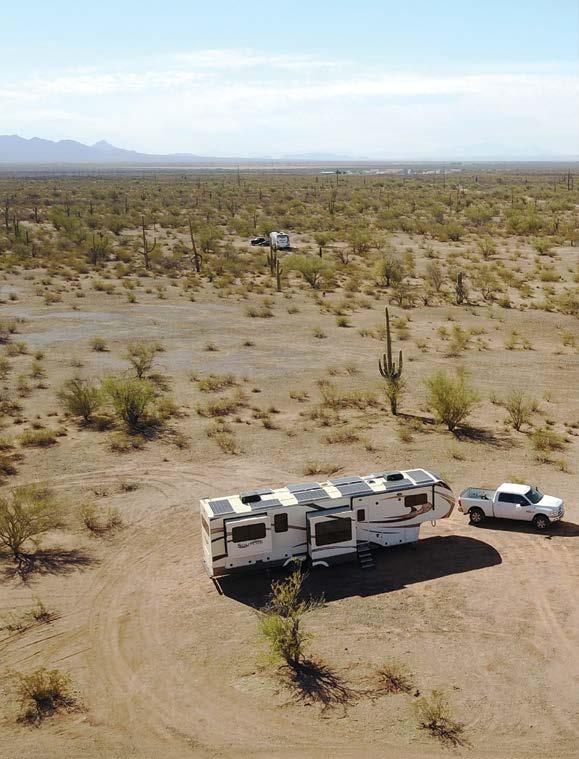 By Kevin Skelton
By Kevin Skelton
Technology moves pretty quickly, and we are at a really exciting place now with RV solar systems. What used to exist only in industrial settings slowly made its way to residential rooftops and has now become commonplace on RVs. This trend has been underway for more than a decade, but advancements in solar cells and batteries have moved to a whole new level in the last few years. What started as an innovative way to skip the need for a campground power connection without the constant noise of a generator has become a favorite way of powering your appliances while boondocking.
With help from John Tennant and the team at Future Solutions, we will take you through the biggest changes in the last several years and their implications for RVers, as well as different RV solar system setups and what they mean for what you can do off-grid.

Lithium batteries were a game-changer for RVs when they came out. They are lighter, charge faster, and store more energy than their lead-acid counterparts. While lithium battery technology hasn’t changed significantly, its acceptance in the RV world sure has. Its praises have been sung for quite some time, but the extra price has always been difficult to swallow. Who wanted to pay $1,000 for a battery that hadn’t yet been proven? We knew they were better on paper, but it took some time to really show they were a better buy in the long run, and now they definitely have.
The safety concerns also didn’t help. Fires caused from lithium batteries were in the news for everything from cell phones to electric cars. But RV lithium batteries have actually always been pretty safe. They use a much more stable chemistry than some types of lithium batteries, and all the well-known brands incorporate smart electronics into each battery to prevent unsafe charging or discharging.
As demand for RV lithium batteries began to rise, more manufacturers got into the game. Early on, there weren’t many brands to choose from, but there are now more options than ever before, including larger batteries. Prices haven’t really come down much, but in the RV solar realm, you really do get what you pay for.

Solar panels have come a long way and solar cell efficiency just keeps getting better and better. What that means for you and me is that a 300-watt solar panel from just a few years ago has been replaced by a 330-watt panel today. That may not sound like a lot, but by the time you cover your RV roof with them, the difference is substantial.
Years ago, installing a solar array meant using custom brackets, but now solar panel manufacturers are catering specifically to the RV market. You can get solar panels in just about every size with some pretty serious wattage, and there
are also more off-the-shelf options for mounting panels. If your roof is already too cluttered with vents and antennas, you can install a raised rack designed to hold solar panels a few inches above it all. You can even buy lightweight flexible solar panels with peel and stick adhesive backings that conform to irregular shapes. The options are almost endless!
When people think of RVing, it brings to mind an idyllic scene in nature, surrounded by spectacular views without another soul in sight. Then they discover that they might not make it a single night without killing their batteries. Without some upgrades, we are usually stuck traveling from RV park to RV park. Not needing those connections all the time can really change the way you RV. It’s a great feeling to know that when you fill up that water tank and hit the road, you will have zero need for a real campground for at least a few days, if not weeks!
All the improvements we’ve discussed above mean solar is more accessible than ever. One huge impact is that generators may become more of a backup for those stretches of cloudy days instead of a go-to. For weekend RVers, small solar setups might even be more worthwhile than a generator that you need to maintain. Ultimately, these innovations have led to a new and exciting era where complete solar setups are becoming commonplace.
Consumer demand for RV solar products has caused RV manufacturers to take notice. Now, for the first time, you can buy a new RV with a decent solar system factory installed. I’m not talking about just some pre-wiring or a couple of small panels, either. RV manufacturers are now offering full solar packages that allow for real boondocking.
Buying a full solar package installed by professionals prevents RV buyers from having to worry about the planning involved with designing a system; choosing solar panels, batteries, and inverters; and the associated electrical upgrades. Lastly, many dealers will include the cost of solar packages into RV loans, allowing people to have a solar system where they wouldn’t have spent the money otherwise.
We teamed up with our friends at Future Solutions, an expert third-party solar installer, to share the major differences between large, medium, and small solar systems. They’ve installed solar systems for several well-known full-timers and are also completing the design work for factory solar packages for a large RV manufacturer.
It’s difficult to give exact numbers for solar setups, because so much depends on what you want to power and how much you want to spend. Power needs and the associated equipment to support these goals can vary between setups, but we’ve categorized some general examples. With all of these, it’s important to keep in mind that every RV is a little different, and it is strongly suggested you get in touch with an installer to figure out the right solution for you.
A large solar install could be considered 1,600 watts of solar panels or more, plus 800 amp hours of 12-volt lithium batteries and 6,000 watts worth of inverters to power your entire coach. While it’s pretty hard to simulate a full 50-amp campground connection, this would allow you to run pretty much anything you want, within reason. While you could run two air conditioning units at the same time with SoftStarts installed, you would still run down the battery bank pretty quickly without a larger solar array. It isn’t uncommon for the roof of a 40-foot fifth wheel or motorhome to accommodate 2,500 watts of solar panels.

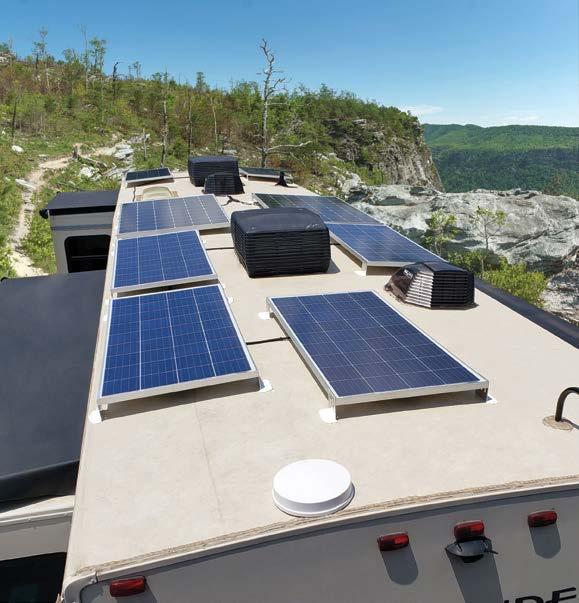
A medium-sized solar setup would range from about 900 to 1,300 watts of solar panels, 400 to 600 amp hours of 12-volt lithium batteries, and a 3,000-watt inverter. In this case, the right inverter could be wired in to power your entire RV, just like with the large setup. This setup can also power large appliances one at a time. That could include running an air conditioning unit with a Soft-Start installed. However, it isn’t designed to do so for very long as it would quickly drain the batteries.
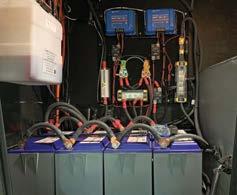
With this setup, you can expect to use appliances in moderation. Use your coffee maker in the morning and reheat lunch with your microwave. If you are boondocking and have been out exploring on a nice sunny day, you can probably get your water heater up to temperature for a quick afternoon shower without propane. Don’t plan on heavy electricity usage all afternoon, though. With a medium-sized solar system, you can really only do so in short intervals when the sun is up.
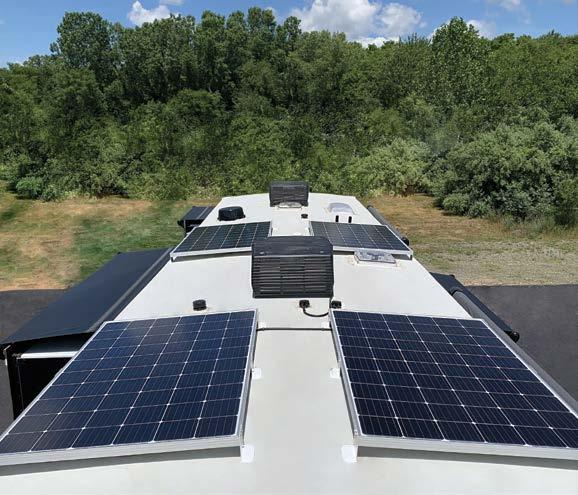

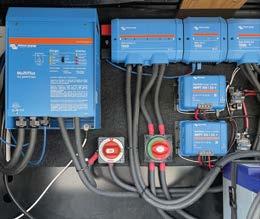
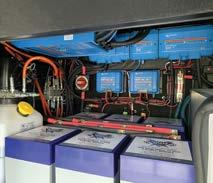
If you’re not ready to go all in right away, with plans to go bigger eventually. your end goal might be so be used in your final, larger system. Inverters are a good example of this. Adding batteries or solar panels usually isn’t hard, but if you want to have a large system start with a 3,000-watt inverter. If later, start with a another one for more power in the future. Not all of them do this, but a popular one that can is Starting small is Sometimes it really helps to get to works and how it performs there are options for all budgets
While the current given RVers more freedom than ever more exciting to see how future. Battery technology will as the electric vehicle industry continues doubt solar panels will become more we don’t have the equivalent connection yet, that might not

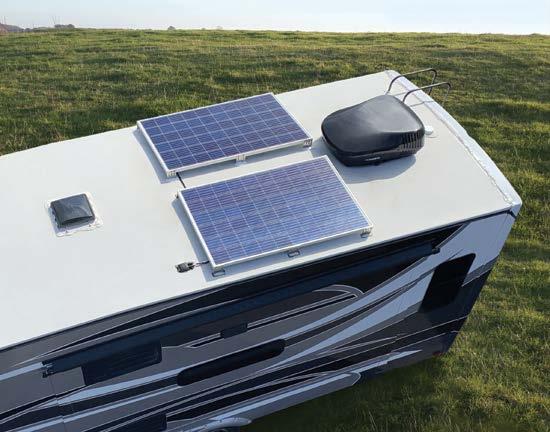
Expandable Solar

System tiers for all budgets


Custom fabrication for desired system intergration
LIFESTYLE. POWER. BUDGET. SOLUTION.

When we see a problem, we don’t just find a solution; we help make changes in the industry you’ve been waiting on that make your journey easier every single day. The products our team uses are the most innovative products on the market and we take the time to learn them inside and out so you don’t have to. With over 35 years of industry expertise, our team can design, fabricate, and install the Solar and Lithium system that’s fits your rig perfectly to make your battery life bigger.

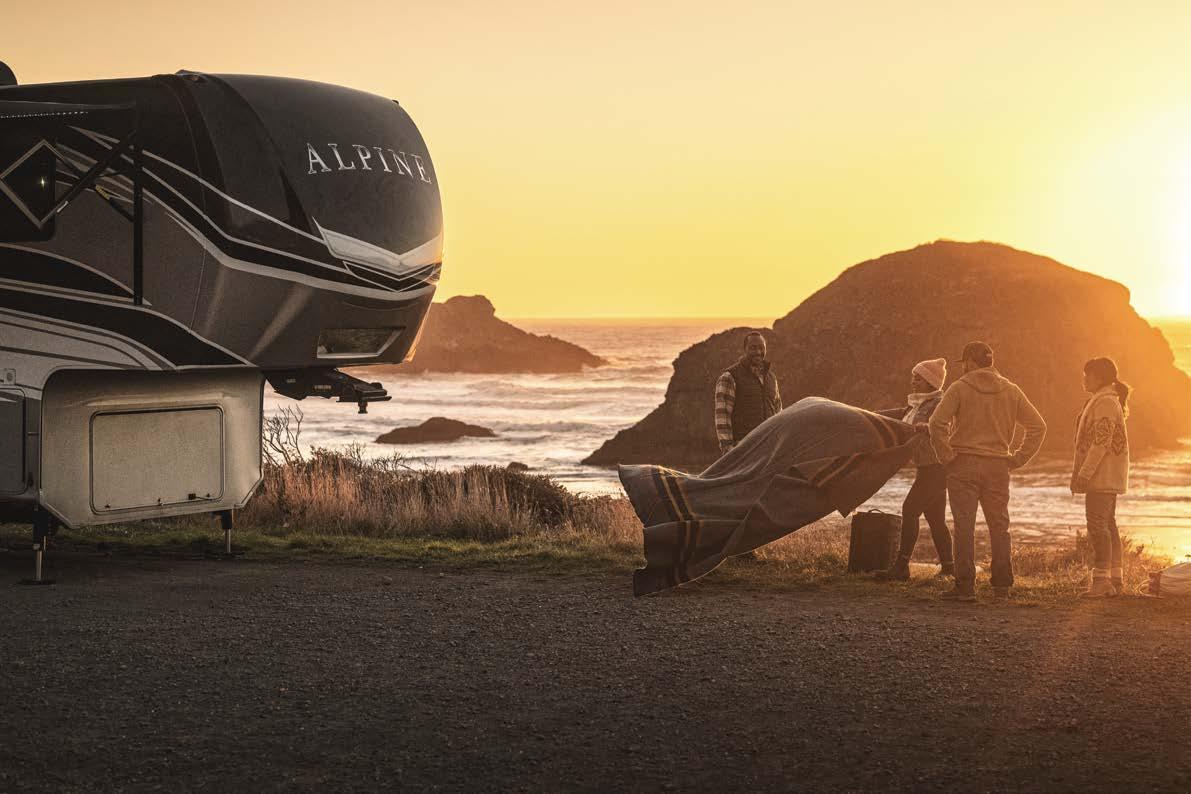
PLANET EARTH TRAVELS
1.6 MILLION MILES EVERY DAY.
4 of North America’s Top 10 Fifth Wheel RV brands are manufactured by Keystone. (And our newest just won RV of the Year.)
 Luxury fifth wheel RVs that deliver more value, performance and delight. Now equipped with SolarFlex™. Meet Montana, Alpine & Avalanche, Cougar, Sprinter and Arcadia at KeystoneRV.com/fifthwheel.
Luxury fifth wheel RVs that deliver more value, performance and delight. Now equipped with SolarFlex™. Meet Montana, Alpine & Avalanche, Cougar, Sprinter and Arcadia at KeystoneRV.com/fifthwheel.
Planning a cross country road trip or staying local? No matter where your RV travels take you, RV Today readers are sharing some of their favorite campgrounds from around the country.

$ Up to $30 / night

$$ $31-$60 / night
$$$ $61+ / night
Full Hookups
Big Rig Friendly Playground
Dog Park
Pool Wi-Fi
Mill Creek Campground Greek Creek Campground
Have a campground you’d like to share? Send an email with subject line “Campground Highlights” to collab@rvtoday.com for more information on how you can share a spot in an upcoming issue.
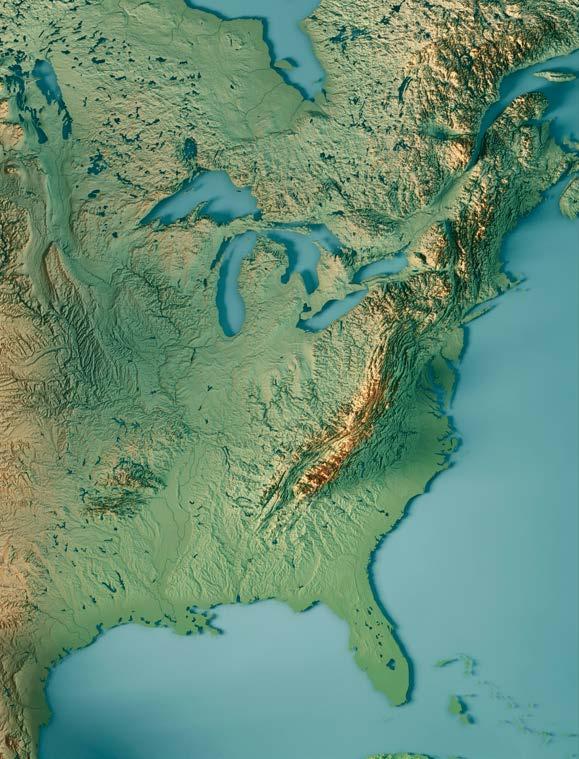 Blue Mounds State Park
Straits State Park
Sun Outdoors Orange Beach Coastline RV Resort
Moose River Campground
Branches of Niagara Campground and Resort
Indian Brave Campground
Sunshine Key RV Resort and Marina
Blue Mounds State Park
Straits State Park
Sun Outdoors Orange Beach Coastline RV Resort
Moose River Campground
Branches of Niagara Campground and Resort
Indian Brave Campground
Sunshine Key RV Resort and Marina
629 River Frontage Road, Silt, CO 81652
Glenwood Springs is a beautiful campground along the Colorado River. It’s directly off Interstate 70 and located in an area with 360-degree views of the mountains.



The campground offers full hookups on all sites, ranging from premium riverfront to value overnight sites. There are spacious sites with fire rings for all RV sizes, and some with concrete patios and tables or chairs. They even offer some covered patios. Enjoy a premium site by the river where you can relax by the campfire with a mountain backdrop. Watching the sunset is so peaceful in the evenings, and during the day you can catch the deer crossing the river several times or watch the fishing boats. The park is very clean and well-maintained, with friendly staff, nature trails for walking, and a ramp for launching a boat or watercraft. Cabin rentals and tent sites are also available. There is a pool, splash pad, and playground to keep the kids entertained.
While you’re in the area, be sure to visit the beautiful Rifle Falls State Park, which has a triple waterfall, or enjoy one of 100-plus martinis at Miner’s Claim Restaurant in Silt. For a scenic drive, follow New Castle Buford Road (Forest Road-245) through the beautiful Aspens.
Klamath, CA 95548
If you’re looking for a quiet campground in the Pacific Northwest where you can truly hear nature at work, look no further! Tucked beneath towering redwoods, you will find peace, quiet, and spacious sites that allow you to relax and just be.
There is limited cell service and WiFi in this campground, which is great for adventure seekers who need to detach from reality for a bit. Be sure to check out some of the neighboring areas, such as Jedediah Smith Redwoods State Park, which offers wonderful hikes and a chance to take a dip in refreshing water after. If you don’t want to venture from your campsite, this campground also offers a few quick hikes right from your camper door!
Jedediah Smith Redwood State Park campground is typically booked out for six-plus months, so if you are looking for a good alternative, we highly recommend this campground.
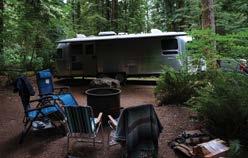

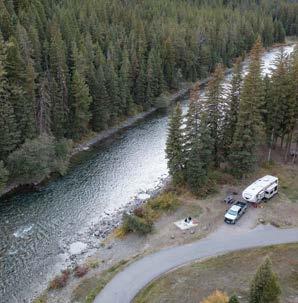
Gallatin Rd, Bozeman, MT 59715
Greek Creek Campground is a great base camp for the Bozeman area. While it is an overall great place to camp, it does have a mixed bag of perks and downsides to consider. On one hand, it’s nestled within the beauty of the Gallatin River Canyon. It’s a gorgeous area, with evergreens and mountain views galore. It’s also a short scenic drive from Gallatin Gateway or Big Sky, and about an hour north of West Yellowstone.
The area surrounding the campground offers several hiking trails and fishing access points. While the campground only offers trash and vault toilets (no hookups), the cost is $20 a night, which is much better than the $50-plus a night you’ll pay at RV parks in the Bozeman area. Each site also has a picnic table and fire ring.
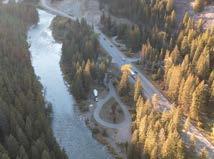
Unless you’re trying to unplug, the biggest downside might be the complete lack of cell service. You may have to drive a good 10 minutes north or south to get any kind of signal.
The campground has sites on both sides of Highway 191, and less than half of them are big rig friendly. A scouting trip, either on foot or in a separate vehicle, is definitely recommended if tight turns, tree limb scrapes, and site length are concerns for you. Moose Creek Flat Campground, two miles south of Greek Creek, is better suited for larger RVs.
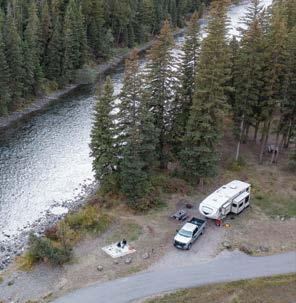
1410 161st Street, Luverne, MN 56156
Blue Mounds State Park campground is located on tree-lined paved roads tucked between a prairie and farmers’ fields. It’s peaceful and relaxing, especially with most sites unoccupied during the week.



The sites are well-spaced, but don’t offer a ton of privacy. There are relatively new bathrooms and shower houses in some loops, with others being a bit older. Cell phone coverage is good to great from Verizon and T-Mobile, plus the campground also offers good WiFi. The sites themselves have gravel pads and
720 Church Street, St Ignace, MI 49781
Straits State Park is a large park with multiple loops spread across an upper and lower campground. The lower campground has nice views of the Mackinac Bridge and the Straits of Mackinac. Easy access off of Interstate 75 is nice, but it means you’ll hear freeway traffic and all the trucks coming across the Mackinac Bridge’s grates.
Site size varies quite a bit, so check before booking if you have a big rig. The campground roads are also a bit narrow, so maneuvering during the busy season is tricky, but manageable. Bathrooms in the upper campground are decent; the ones in the lower campground are newer.
The upper and lower campgrounds have separate dump stations. If you can get by without electricity, check out the “A” sites in the lower campground, as they are right on the water. Cell service is decent for Verizon and T-Mobile, but seemed stronger in the lower campground.
There’s a nice trail through the woods between the upper and lower campgrounds, and the nearby Father Marquette Memorial is worth checking out. The town of St. Ignace is cute, with local shops and restaurants as well as the ferry dock to Mackinac Island.
decent-sized grassy areas to set up screen tents or chairs. There is much to do in this state park, including watching for the protected bison herd out on the prairie, as well as hiking and biking trails that can lead you to a historic quartzite quarry and some great views. At night, it’s nice and dark so you can see a lot of stars. With a short walk from the lights of the campground, you can often see the Milky Way due to the darkness. The town of Luverne is a quaint community and has a nice drive-in movie theater.
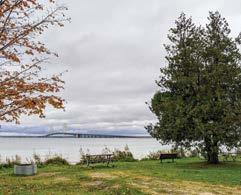
Colorado Springs, CO 80926
Cheyenne Mountain State Park campground offers spacious full hookup sites and amazing views of Colorado Springs. The park also offers 28 miles of beautiful trails for hiking and biking, plus some designated trails for equestrian and dog use. The Limekiln Trailhead also offers parking, restrooms, picnic tables, and a playground.
This campground has so much to offer for those who love the outdoors. Nearby you can explore the Cheyenne Mountain Zoo, Garden of the Gods, and Pikes Peak.
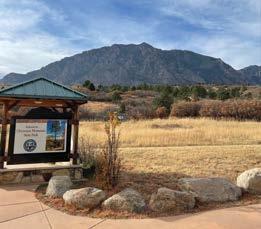
 Contributed by Taylor Fortunato
Contributed by Taylor Fortunato
$$
22800 Canal Road, Orange Beach, AL 36561
You can’t help but love this campground’s pull-in waterfront sites for Class C or Class A motorhomes, as well as the gorgeous resort-style pool! This affordable luxury park is located on 30 acres in the Gulf Shores and Orange Beach area of Alabama and has tons of Southern charm.
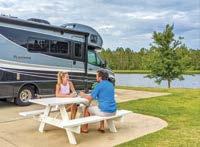
The clubhouse and pool area are beautifully designed and the hot tub was nice to enjoy during chilly mornings or evenings. The fenced-in dog park is great to let your pups get some exercise in. Plus this park is close to great dining options in the area. The campground is very big rig friendly while also catering to smaller RVs—everyone is welcome! It’s located about 15 minutes from the beach.
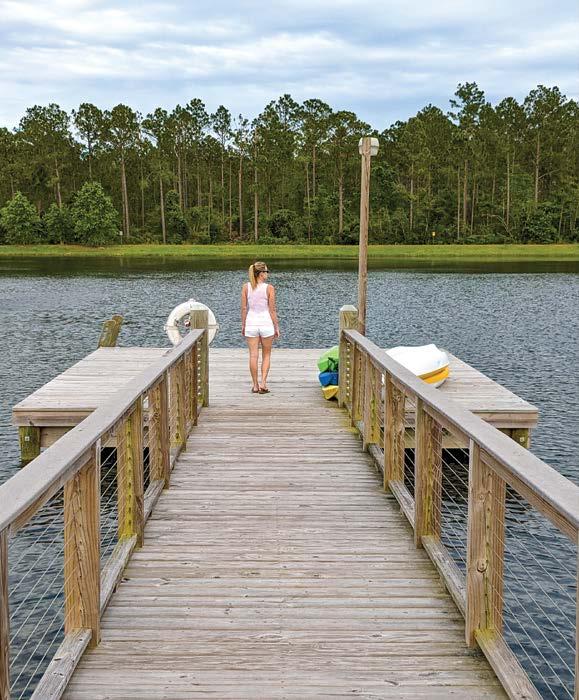

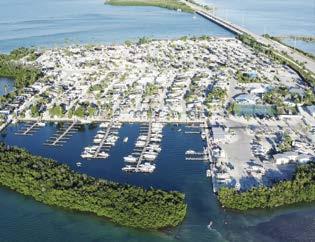
38801 Overseas Highway, Big Pine Key, FL 33043
With beautiful weather and the perfect location, this campground is a great place to enjoy all the Florida Keys have to offer. The campground is surrounded mostly by water and has its own beach area where you can launch paddle boards or kayaks. They even offer rental travel trailers for anyone who may like to give RV living a try.
You can also rent a tiny home right on the water. This type of setup is perfect for RV families who would like to have others join them for a trip to the Florida Keys but who may not have the space in their RV to sleep additional people.
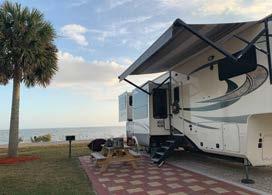
The best part of this campground is all of the activities for the kids to do. There is a playground, a basketball area, volleyball, corn hole, and more. There are also activities scheduled throughout the week. There are waterfront and non-waterfront campsites, but most of the non-waterfront campsites still offer some sort of water view. The ocean breezes and smells are a
great way to start off the day. End your day relaxing by the heated pool or enjoying a sunset from the pier.
Be sure to take a snorkeling trip to Alligator Reef Lighthouse, check out the Dolphin Research Center in Marathon, and enjoy a day at nearby Bahia Honda State Park. You can find more restaurants and entertainment in Key West, which is about 45 minutes away.
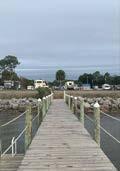
957 Highway 98, Eastpoint, FL 32328
You’ll find this beautiful campground located on the forgotten coast of Florida in the small town of Eastpoint. There are two campgrounds just a few miles apart, and East Park is the smaller of the two, located across the street from the ocean. East Park only has 30 full-hookup sites, but has all the amenities a large RV resort would have.
The amenities include a bathhouse, laundry, workout room, dog park, and a small fishing pier across the street. You can see the ocean out of all your windows, and you might even see dolphins jumping! Since it’s located on a bay, the water isn’t rough, which is great for fishing, kayaking, and paddleboarding. The campground honors several discounts, including Passport America, for up to 50% off.
Eastpoint is a small, cute little town, with a great brewery and a couple of coastline restaurants. If you want to venture out, you can drive to St. George Island, a small barrier island where most people drive around with their golf carts. The island has very strict building codes, with no high-rise buildings allowed, so you can see the ocean from both sides. There are a few attractions, like the old lighthouse with a museum, and St. George Island State Park.
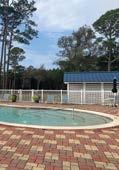 Contributed by Patty Gill
Contributed by Patty Gill
$$$
Branches of Niagara is full of fun amenities! There is a pool, mini golf, a zipline, laser tag, and a pond for fishing, swimming, and kayaking. There really is something for everyone here.
You’ll love the onsite store, which has all the basics and many unique gifts. The playground has a large sand pit, which keeps the kids busy for hours, as well as Adirondack chairs for the parents to relax in while they watch their kids play. The sites were spacious, though there weren’t many trees to separate you from neighbors. This campground is perfect for families that like to stay busy.
Branches of Niagara is the perfect stopping point to experience Niagara Falls State Park, which is a short 10 to 15 minute drive from the campground. While in the Niagara Falls area you can also visit Old Fort Niagara, or if it’s an adults-only trip, the Niagara Wine Trail!

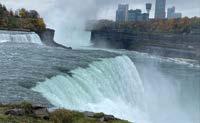

159 Perry Highway, Harmony, PA 16037
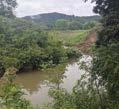
Indian Brave Campground is a great familyfriendly campground with walking access to the little town of Harmony along a pedestrian trail. The park has an Olympic swimming pool, game room, laundry, recreation hall, and nature trails.

The campground offers pull-through sites, cabins, and tent spaces. If you are up north for a season, they also offer long-term and seasonal spots and pricing. Connoquenessing Creek surrounds the campground completely, creating a peninsula with great fishing and kayaking. There are nearby state parks, and Pittsburgh is just 30 minutes south.
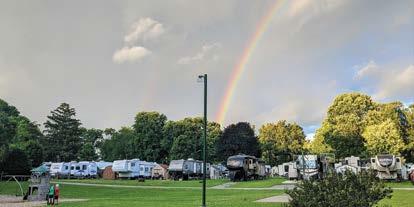
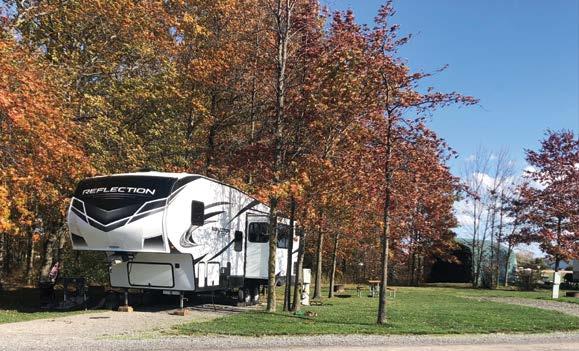
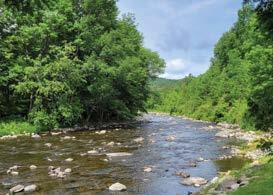
2870 Portland Street, Saint Johnsbury, VT 05819
This is a small family owned and operated campground which abuts the Moose River, making for a pretty backdrop and a wonderful place to dip your toes in the shallow, clear water. You’ll love the large pull-through sites, well over 125 feet, with full hookup sites in the center section of the campground.
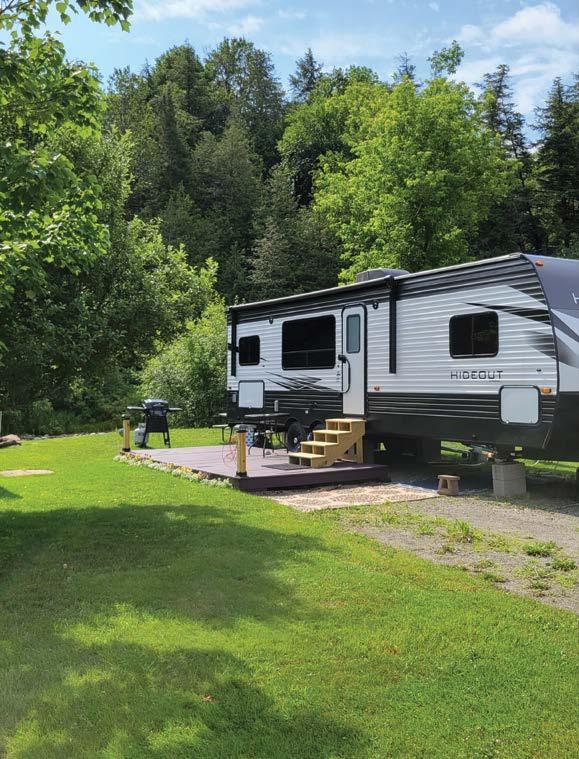
The owners host lots of great get-togethers. There’s a community bonfire each week, and you might even be invited to a potluck dinner where the owners supply prime rib and host campers in a large covered pavilion. One evening they drove around the campground offering free ice cream. Some mornings they supply free bagels or donuts, and there’s always free coffee. When you arrive, you are given a swag bag with printed information about the surrounding area and businesses.
The riverfront sites are perfect for sitting outside and enjoying a fire. The pull-through sites are very close on one side as each RV pulls in the opposite direction, but they’re so long that if you pull up far enough, you’re not looking at your neighbor.
Moose River Campground is in a good location, just a few miles from downtown St. Johnsbury and the town’s main attraction, Dog Mountain, a sprawling property with hiking trails, dog ponds, and the Dog Chapel. The Fairbanks Museum and Planetarium is worth a visit, as is Maple Grove Farm. About 15 miles away is the picturesque and busy town of Littleton, New Hampshire, where there is nice shopping, galleries, and eateries—I recommend the pizza and beer at Schilling Beer. There is a forest just a few miles away from the campground that has some nice hiking trails. ■
Contributed by Nancy WaltersJust like every great road trip, sometimes life takes you in a new direction. At Heartland, we’ve launched a new journey to make our RVs better than ever. We’ve doubled down on seeking out the highest quality materials, creating fresh and inviting interiors and giving every unit the kinds of finishing touches you’d find in a new home.
Every unit goes through a top-to-tails inspection with a quality assurance expert—in fact, we have an 89,000-square-foot facility dedicated to walking each RV through a series of checklists to ensure it works exactly as it should. And with updated floor plans incorporating features our customers love best—spacious bathrooms, designer kitchens, furniture meant for cuddling up together—we’re confident every trip in a Heartland will be a happy one.
After all, that’s what RVing is all about: hitting the road with people you love, having adventures, making memories. So when you buy a Heartland, just focus on taking the journey of a lifetime. We’ll take care of the rest.

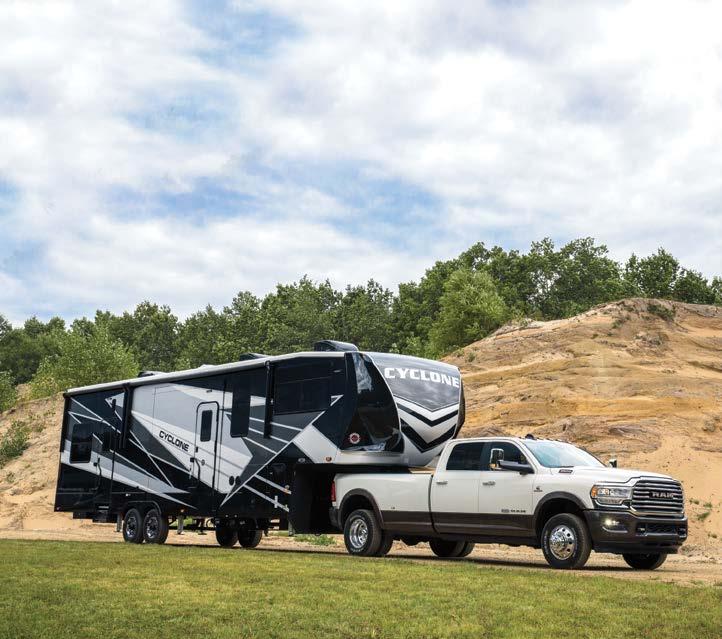
Experience the all-new Heartland online and check out 360-degree model tours, detailed floor plans, all-new features, galleries of updated decor and more.
Just visit HeartlandRVs.com.





RV solar systems are not one size fits all. Most stock RVs don’t come with a solar system of any kind, and those that do are usually very minimal. RV owners who upgrade their setup will come across many options and methods for how to do so. It all comes down to your vehicle, your electrical fixtures, and your power consumption.
We’ve asked our readers why they installed their solar system and how big of a system they purchased, offering a few different perspectives.


We had always planned to do a large solar install at some point. A couple of years ago, we were getting more into the idea of boondocking, but we wanted to be able to run our air conditioners while doing so. In February of 2020 we stumbled into a group buy of Battle Born batteries through Fulltime Families, and that discount motivated us to begin our install. The pandemic hit a month later, and seeing campgrounds closed nationwide really drove us to complete the entire project so we would have more freedom and flexibility as to where we could camp. Otherwise, we might have spaced it out a bit more.


We knew we didn’t have a huge amount of cargo weight to spare in our fifth wheel, so we went with 15 lightweight flexible solar panels from Renogy and taped them on with roof repair tape. The panels are 175 watts each, giving us a total of 2,625 watts of solar on our roof, with a 600 amp hour 12-volt lithium battery bank, and two 3,000-watt inverters. Our solar array is oversized for our battery bank, but the batteries are more than sufficient for our needs and the big solar array means we can run our air conditioners through the hottest parts of the day. This installation has allowed us to boondock in many amazing places and also takes a lot of the stress out of travel planning as we can now stop basically anywhere since our setup covers all of our power needs.
We documented the whole install process on our YouTube channel, including lessons learned and periodic system updates. You can also check out our 5-part series on how to design a solar system for your RV based on everything we learned, no matter what your power goals are.
– Kevin Skelton @_neverstopadventuringMy wife Lacey and I exclusively boondock, so we are rarely plugged in, and we will never own another RV without a complete solar system—the freedom it provides is amazing. For the most part, we don’t live any differently boondocking than we would if we were plugged in at an RV park. There is never a time we feel we have to sacrifice anything due to an electricity shortage.
We have two dogs, and boondocking provides more opportunities to roam. We are able to leave them in the RV without worrying and know the temperature will stay regulated. At the same time, we are able to plug in cell phone boosters, security cameras, and all our other electronics, and monitor the whole system remotely. Peace of mind that everything is okay when you’re away from your RV is so important.
I am a certified RV solar installer and my wife and I own Cross Country RV Tech and Solar. We travel the country doing solar installs. Our current RV is a 2019 Grand Design Imagine 2500 RL. This is a 30-amp rig, which is important to know when comparing systems. We couldn’t just take this system and put it in a 50-amp RV; only half of the RV would work.
Our system includes:
☐ 8 100Ah Battle Born batteries
☐ Victron BMV-712 battery monitor
☐ Victron Multi-Plus 12/3000/120-50 120v
☐ Victron Smart Solar 150/70 MPPT (roof)

☐ Victron Smart Solar 100/50 MPPT (portables)
☐ Victron Orion DC-DC Charger
☐ Victron Cerbo GX
☐ Victron Lynx Power-In and Lynx Distributor
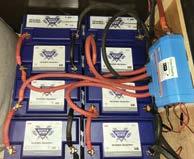
☐ 3 Trina Solar 415-watt solar panels (roof)
☐ 6 Newpowa 100-watt solar panels (3 200-watt sets I built for portables) for a total combined solar of 1,845 watts
☐ Micro-Air EasyStart 364 soft start for TV rooftop AC
☐ We love that our system allows us to be plugged into nature rather than a campground!
– Derek and Lacey Green
Certified RV Solar Installer, Cross Country RV Tech and Solar at ccrvtechandsolar.com
@crosscountryrvtechandsolar

Most converted camper vans have some sort of solar system. In fact, many do not have the ability to plug into shore power at all, and rely entirely on their solar setup for powering all electrical elements in the van. With a van’s smaller roof, there is less real estate for panels. Our solution for maximizing the sun is to build the roof rack in such a way that we can angle our solar panels to get direct sunlight.

This solar system has 320 watts of solar, which is a bit low, but the result of having less solar panels is that there is room for a deck and the ability to hang out on the roof. And to make up for it, we have 600 amp hours of battery storage with five Battle Born lithium ion batteries.
I installed the entire system myself. I’ve done a few installs for other people in addition to my own, and I really enjoy it. It’s definitely a doable project for someone to take on, and I recommend DIYers who are hesitant follow two pieces of advice: Make a plan! Once you figure out the component you want within your system, it’s super helpful to make a wiring diagram. Draw out where your wires go and run it by some people for feedback.
As you install your system, connect components in small stages. For example, connect the DC-to-DC charger and test it. Then once you install your solar panels, charge controller, and batteries, you can test that system. Following that, you can install and test the inverter. That way you break it up into manageable chunks, which is less intimidating and makes troubleshooting much easier.
Solar is such an amazing and efficient way to add power to a van. It’s clean, quiet, and requires little to no maintenance. Plus it’s a huge upgrade to be able to be off-grid!

 – Josh Sipma @outerspace_vansupply
– Josh Sipma @outerspace_vansupply
 By Jack Huber
By Jack Huber
We lived in the Denver area for several years before going full time, so we had ample opportunities to visit Wyoming, and we took advantage as often as we could. It didn’t hurt that we had good friends who purchased a summer home in Encampment, Wyoming, which was only about three hours away from us. Wyoming offers incredible amounts of solitude basically everywhere except Yellowstone and possibly the Grand Tetons. It is,
after all, the least populous and second most sparsely populated state in the country. That leaves a great deal of the state for seclusion and quiet. We haven’t been everywhere in the Cowboy State, but we have explored enough to give newcomers a pretty good idea of where to visit. Here is a quick countdown of some of our favorite reasons to visit and areas to see.

YELLOWSTONE NATIONAL PARK To be honest, this next summer will be our first visit to Yellowstone. Its popular tourist attractions are the exceptions to the isolation of Wyoming, with seasonal crowds in the thousands, and 4 to 6 million visitors to the national park each year. This has kept us away until we could better plan a less-crowded stay. The park covers more than 3,500 square miles, but much of it is wilderness. There are several hotels and cabins in the park and towns like Cody and Jackson act as gateway towns, each with campgrounds and hotels a few miles away.
To be sure, there are many more fabulous reasons to visit Wyoming. Its solitude, privacy, and sheer remoteness is a stark contrast to most states in the lower 48, and well worth your leisure time.




DEVIL’S TOWER NATIONAL MONUMENT
Perhaps best known for its part in “Close
Encounters of the Third Kind,” the Devil’s Tower is an iconic butte that rises more than 1,200 feet above the Belle Fourche River and is 867 feet tall when measured from its base. Each year, more than 5,000 climbers decide to scale the monolith, with only five reported deaths in more than 100 years. Climbing is the only way to reach its summit, but the landmark can be seen for 10 to 12 miles.
THE GRAND TETONS Quickly rising 7,000 feet from the valley below, the Teton Mountains are a dramatic extension of the Rocky Mountains and form the western side of the Jackson Hole geologic region. The range is about 40 miles long and sits just east of the Idaho border. The Teton peak is the tallest of several in the Cathedral Group at nearly 14,000 feet in elevation. There are more than 200 miles of trails in the national park, and the Snake River flows southward through the valley before turning west toward Idaho.
of Yellowstone National Park, Cody’s Buffalo Bill Center of the West brings the enigmatic character played by William F. Cody to a world-class comprehensive museum. There are five museums in the complex. Of course, everything you did and didn’t want to know about Buffalo Bill can be found throughout the region as well.
SCENIC BYWAYS With a little investigation, you’ll find many scenic byways where you can immerse yourself in the beauty of the state. A few notables are Battle Pass, starting in Encampment; Beartooth and Bighorn, east of Yellowstone; Black Hills, near the South Dakota border; Bridger Valley, where the Oregon Trail,
Mormon Trail, Pony Express Route, Transcontinental Railroad, Old Lincoln Highway, and old US-30 all met; Flaming Gorge-Green River Basin and Muddy Creek, traveling to the Utah border; Oregon Trail; Snowy Mountain Range; Seminoe to Alcova, through the Seminoe Mountains; and Star Valley, south of the Grand Teton National Park.
BACK ROAD MUSEUMS
One of our favorite things to do is take the back roads everywhere we can and stop in some of the purely local museums that city folk never get to see. Some of these highlight the Native American past, the homesteads and western migration, mining camps, dinosaur fossils, and yes, Buffalo Bill. We also came across interesting attractions like the “Disappearing River” in Sinks Canyon, Jesse James’ and Butch Cassidy’s Hole-in-the-Wall Outlaw Hideout, and various Native American Medicine Wheel remnants.
DUDE RANCHES If you want to shed your business attire and experience the old west, Wyoming boasts dozens of old-fashioned dude ranches, one to suit almost any preference and time frame, and scattered around many differing climates and settings throughout the state. I understand many of these are sold out far in advance of prime seasons, but chances are good you’ll find an opening somewhere.
FOUR-WHEELING
COLORADO ROCKIES The Rockies extend into Wyoming and offer hundreds of miles of 4x4 trails, wildlife viewing, camping, and fishing. Using only these trails, one can drive an ATV 80 miles from Encampment or Riverside all the way to Steamboat Springs, Colorado. During our last tour of that area we saw a moose, several bald eagles, many deer and antelope, and a herd of bighorn sheep. It’s also a birdwatcher’s paradise.
VAST HILLS

Dakota and Nebraska to the east and Idaho and Utah to the west, the amount of unfarmed open space in Wyoming rivals the largest deserts in the country, minus the cacti. The grasslands are beautiful, the hills are often green, and the remote feeling is unmatched by most other states. ■


About the Author
Jack Huber is a full-time RVer who also writes books, poetry, and blogs. He is also a podcaster and photographer. You can find more of his adventures on Facebook at JackHuberAuthorBlogger and on his website, jackhuber.com.
On the border of the United States and Canada lies the most powerful waterfall in all of North America—Niagara Falls.
Niagara Falls is actually made up of three waterfalls— American Falls and Bridal Veil Falls are on the United States side, and Horseshoe Falls, which is also called Canadian Falls, is located primarily in Canada. Horseshoe Falls is the largest of the three falls, at 167 feet tall, 2,500 feet wide along its crestline, and with a peak flow rate of almost 700,000 gallons of water per second.
The magnitude of Niagara Falls is guaranteed to make your jaw drop, and while these falls can be enjoyed in both the United States and Canada, the best way to experience them on the United States side is to visit Niagara Falls State Park.
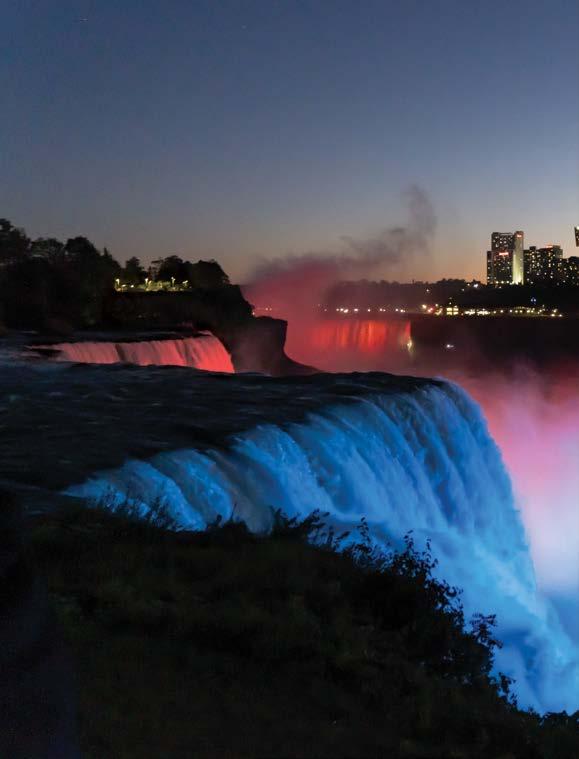
In an effort to preserve the falls, which were gaining interest from visitors and developers, Niagara Falls State Park was established in 1885, making it not only the first state park in New York, but also the first in the United States!
Niagara Falls State Park was designed by Frederick Law Olmsted, who also designed New York City’s Central Park, and the park now features many overlooks of the three falls, fun activities, and interesting history to learn.
While Niagara Falls is a beautiful place to visit, it is also a crucial resource for the area. At Niagara Falls State Park, you will not only have the chance to see the falls, but also learn more about their history, preservation, and energy impacts.
In the mid-1890s, Nikola Tesla developed a system of alternating current, which converted the energy of Niagara Falls into electricity. This led to Nikola Tesla and George Westinghouse creating the first major hydroelectric power plant in Niagara Falls. Today, Niagara Falls can generate 4 million kilowatts of electricity, supplying more than a quarter of the power used in New York and Ontario.
● Oldest state park in the United States
● 3,160 tons of water pass over the falls every second
● The Niagara River ecosystem supports thousands of species, including birds, fish, and plants
● The park was designed by Frederick Law Olmsted, who also designed New York City’s Central Park

Niagara Falls State Park is located in Niagara Falls, New York, which is just 30 minutes north of Buffalo, New York, and less than two hours from Toronto, Ontario, both of which are located close to major highways and have international airports.
Niagara Falls is a year-round destination, with each season bringing a different experience to the park.

Spring: Spring can be a cold and snowy time to visit, but around May the weather starts to warm up and attractions begin to reopen for the summer season. The crowds tend to be lighter in the spring.
Summer: Summer is the peak time to visit Niagara Falls, so the crowds are at their highest, but so are the temperatures, which makes the cool mist of the waterfalls extra refreshing! To avoid crowds, we suggest visiting on a weekday and arriving early.
Fall: Autumn brings cooler temperatures and fall foliage to the area, plus fewer crowds! For the best experience in the fall, be sure to visit by the end of October, which is when some of the attractions shut down for the winter.
Winter: In the winter, Niagara Falls is covered in snow and ice. Those who venture to the falls at this time of year will be treated to much smaller crowds, but keep in mind that some activities, like Maid of the Mist, will be closed for the year, while others, like Cave of the Winds, will be modified for the season.
There are many hotel options within walking distance of Niagara Falls State Park. While the park itself doesn’t have a campground, there are a couple of KOAs and other privatelyowned campgrounds just a short drive away.
For those looking for a free overnight option, the Walmart Supercenter in Niagara Falls allows overnight parking, and we had plenty of overnight neighbors when we stayed there.
If you don’t mind a longer drive, we highly recommend staying in Buffalo, New York, which has some neat neighborhoods and lots of great local foods to try, and offers more lodging options.
One of the best things about Niagara Falls is how close you can get to the falls. Be sure to wear clothes that dry quickly and bring waterproof sandals, a GoPro, and a dry bag for your belongings.
Niagara Falls State Park is free to access, but there is a cost to park in the four parking lots, ranging from $10 to $15 for the day. However, you can avoid this cost by entering the parking lot before or after its operating hours.
RVs and buses can only park in parking lot #3, but if you can fit in a regular parking spot, the other parking lots will work fine.
Some areas of Niagara Falls State Park are pet friendly, and leashed dogs are permitted on green spaces and footpaths. However, dogs are not permitted inside attractions, such as Maid of the Mist or Cave of the Winds.
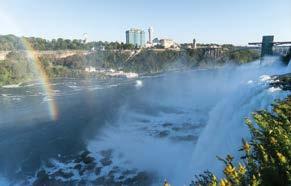

The best way to see Niagara Falls is at one of the many overlooks. Each overlook provides a different view of the falls and has accessible, paved walkways, so they can be enjoyed by everyone. Here is what you can expect at each one.
Terrapin Point: This is the closest view of Horseshoe Falls from the United States side. At this overlook, you’ll be right along the edge of Horseshoe Falls and can see the majority of the falls, but due to its large size and curved shape, you will not see it in its entirety.
Nikola Tesla Monument: At this monument you can learn more about Nikola Tesla and enjoy a nice overlook of American Falls and Bridal Veil Falls.
Luna Island: Luna Island is located right between Bridal Veil Falls and American Falls, giving you incredible views from the top of both.
Prospect Point: This overlook provides great side views of American Falls, as well as a more head-on view of Horseshoe Falls from a distance.
While the walk between all of the overlooks is pretty easy, you can also see the park by riding the Niagara Falls Scenic Trolley. The guided trolley takes you around the park, sharing historical anecdotes, tips, and fun facts. You can hop off to check out the overlooks and then hop back on to get to the next major attraction.
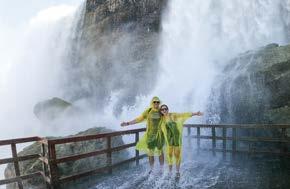
Riding a boat is a must-do when visiting Niagara Falls! Maid of the Mist has been operating since 1846 and is now running on all-electric, zero-emission passenger vessels, the first of its kind in the United States.
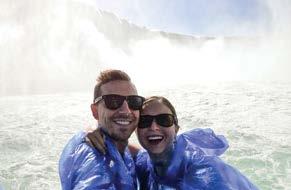
A 20-minute boat ride takes you past American and Bridal Veil Falls before approaching Horseshoe Falls, where you’ll be blasted with powerful mist. It’s such a fun boat ride and will put a huge smile on your face.
Maid of the Mist also has two other attractions to check out— an observation tower that overlooks all three falls, and the Crow’s Nest, which is a staircase that takes you by American Falls. Both of these attractions are included with your Maid of the Mist boat ticket, but if you decide to skip the boat, you can visit them for a nominal fee.
Cave of the Winds was our favorite attraction at Niagara Falls State Park. Despite its name, it’s not actually a cave. In the 1800s there was a rock overhang, which was similar to a cave

and allowed people to stand under the falls. The overhang collapsed in the 1900s, but the name stuck.
For an admission fee, you can watch a movie about the history of Niagara Falls before heading down to the bottom of Niagara Gorge. Once at the bottom, you’ll be able to walk on a series of wooden walkways that get you up close and personal with Bridal Veil Falls.
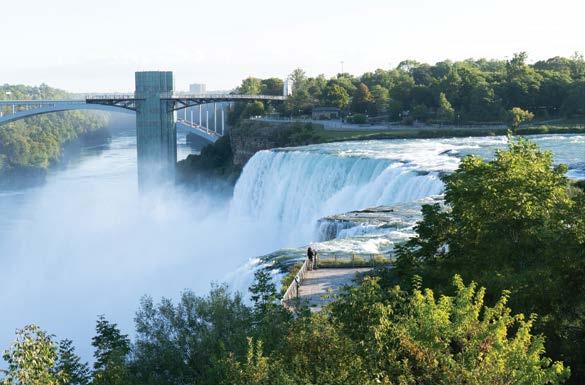
As you climb these wooden stairs, the mist from the falls gets progressively stronger, and if you’re feeling brave, you can stand on the Hurricane Deck, where you’ll get absolutely drenched by a rushing section of the falls. We laughed nonstop while we were here—it was a blast!
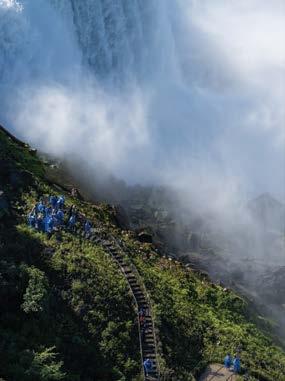
See Niagara Falls at night
Be sure to return at night for a completely different experience! Every night at dusk they light up the falls with different colors, and the best place to view them is at Prospect Point. There is also a light show at around 9:30 p.m. each night.
We hope you enjoy Niagara Falls State Park as much as we did. The beauty and history of the park make it such an interesting and fun place to visit, and we can honestly say we have never smiled or laughed as muchin one day as we did while there! ■
 Kathryn
and Adam Frazer @adventuresofaplusk
Nikola Tesla Monument
Crows Nest
Kathryn
and Adam Frazer @adventuresofaplusk
Nikola Tesla Monument
Crows Nest
Owning a camper or RV can be a lot of fun to restore yourself. One of the best parts of buying a used camper is the ability to completely redo the interior and add your style. Brand-new travel trailers with a customized interior can cost a pretty penny but there are endless possibilities if you are able to renovate a camper of your own. For us, that was taking apart and renovating a 1968 Serro Scotty vintage camper!
 By Beth Cronin
By Beth Cronin

Before & After: It’s no secret that renovations of any kind usually come with a number of challenges, and we had our fair share of them tackling a 50-year-old travel trailer renovation. Initially, the camper came with all original fixtures, including a full stove/oven, propane heater, and light fixtures, even the original black tar linoleum floor, so to say we were in for a challenge would be an understatement. With needing to replace all of that, we were able to make every inch of the space our own and with our unique style and taste which included up-to-date appliances, light fixtures, new flooring, and upholstery.

Paint: You may not be gutting a camper and doing a complete overhaul as we did but there are some simple things you can do to give your home on wheels a new look. Changing the paint is a simple and attainable refresh if you don’t know where to start. Whether it’s the walls, the trim, or the cabinetry, a little paint can make a huge difference when it comes to transforming a space. We chose to paint all of the walls and most of the cabinets white. Light colors make a small space such as ours feel bright and airy, as well as give the impression that it’s larger than it really is.
Curtains: One of my favorite interior projects would have to be our custom window treatments. Made from drop cloth you find at Home Depot, small wooden dowels, and leather curtain holdbacks, these curtains were not only budget-friendly but beautiful. A piece of white vinyl flat trim was slid into the sleeve at the top of the curtain and then screwed to the wall above the window to hold the curtain in place. We placed the dowl in another sleeve along the bottom of the curtain so that it would be heavier while the curtain was down and easier to roll up. When we want to let the sunlight in, the leather holdbacks keep the curtain up. With some basic sewing experience (or knowing someone who does) these curtains are practical for travel and are a simple way you can give your camper a polished look.
Keep in mind that even simple touches such as pillows, rugs, and bedding can completely transform your space without spending a lot of money or exerting too much effort!
Whether it’s to match our personal style or to make it more functional, we are constantly improving the interior of our camper. In the end, you want your camper to be your happy place, so whatever you decide to do, just enjoy the space you’re in! ■



Sticky Tile: Peel and stick tiles are another simple way for you to upgrade your camper. You can find a wide selection of them online. This can be a great option for elevating your kitchen and bathroom spaces. They are very easy to apply and can be put over just about any surface, including existing tiles, so there is no need to demo existing tiles! A great feature of the peel and stick option is that it can withstand bumpy roads and for us being in New England, they also withstand the cold winters and hot summers without peeling off! We put peel and stick tiles as the backsplash in our kitchen area as well as on the walls of our tiny bathroom. With only a utility knife, these tiles can easily be cut and in my opinion, you don’t need to have any DIY experience to install!

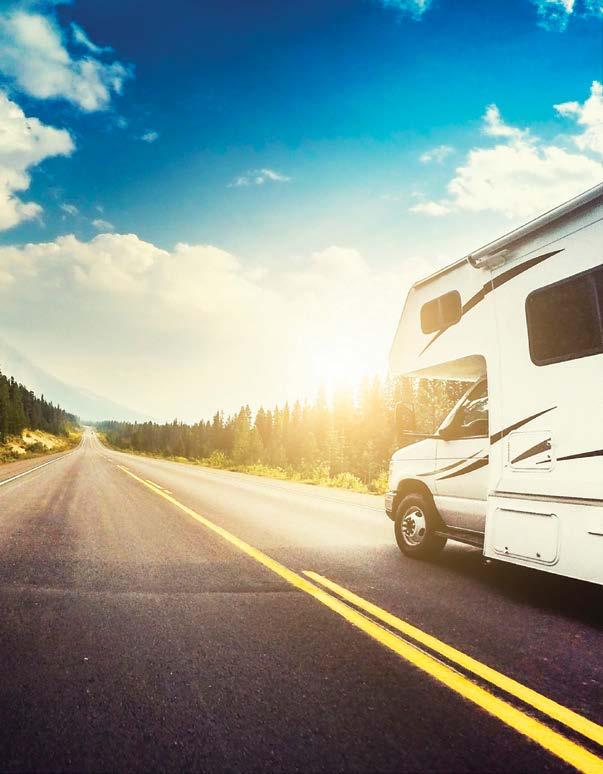
THE ONLY 100% AUTOMATIC SHUT-OFF SAFETY DEVICE FOR YOUR PROPANE SYSTEM.
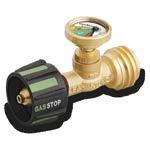
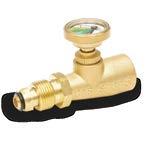


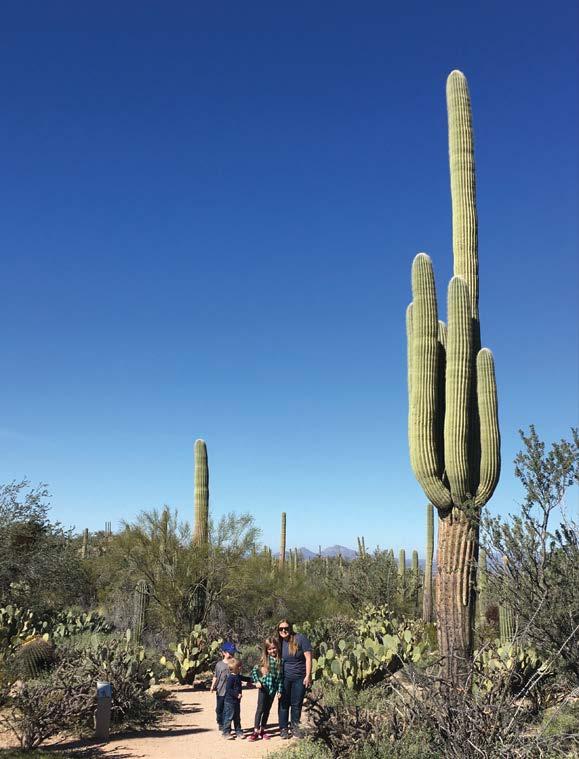
By Matthew Fry
″As a Junior Ranger, I promise to protect, preserve, and respect the desert landscape of Joshua Tree National Park. While at home, I will learn about the natural world and I will share what I learn with my friends and family. I will teach others how to enjoy national parks responsibly.″
– Ranger Pledge, Joshua Tree National Park
OOver the last two years, our family visited more than 30 parks managed by the National Park Service (NPS). We visited everything from national monuments to some of the most well-known national parks in the country, and took advantage of the Junior Ranger Program at many of these parks during our adventures.
If you’re not familiar with the Junior Ranger Program, it is an activity-based program offered at practically every NPS-operated park. Children complete activities including things like word searches and scavenger hunts, and through the activities, they learn about geography, history, and animals that call the park home.

While the Junior Ranger program is typically for children between 5 and 13 years old, anyone can participate. Some parks even offer a Senior Ranger program for adults!
The

☐ Usually free to visitors with the park entrance fee
☐ Available in 62 national parks
☐ Offers learning opportunities for all ages
☐ Can also be done online and by mail
After completing the suggested number of activities in their booklet, participants return to the visitor center or ranger station to be sworn in. Official park rangers lead the new rangers in reciting an oath as they raise their right hands and pledge to protect, preserve, and respect the park. Junior Rangers receive a badge or patch to make it official.
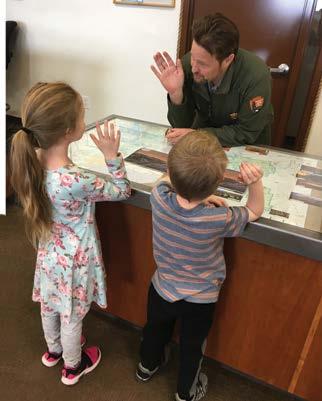
Parents know that sometimes kids don’t get as excited about learning as we’d like. We found the Junior Ranger program helped get our kids excited to learn about the park, especially because of the reward at the end. We couldn’t visit a park without them reminding us that we needed to stop by the visitor center or ranger station to get their booklets.
We asked our daughter, Norah, what her favorite part of the Junior Ranger program was, and she said, “I loved how sometimes it encouraged us to go on hikes and look for things during the hike.” The booklets would often ask them to circle or check off plants and animals discovered during their hike or time in the park.
One of our favorite memories of the Junior Ranger program was at Saguaro National Park. The kids were supposed to draw a picture of their favorite cactus in the park. While going through the booklet,
the ranger asked our kids about their favorite cactus, and as they described it, the ranger excitedly said, “I know that one! It’s my favorite too!” With over 2 million cacti in the park, we all had a good laugh.
We also enjoyed how attentive the park rangers were to our kids—they were genuinely excited and passionate about answering questions. Following these interactions, our kids even said they’d love to be park rangers someday.
The Junior Ranger program was a significant part of homeschooling our kids while we were on the road. Instead of reading about history, geology, and animals, they saw them in person. However, even if you’re not homeschooling or traveling full time in an RV, you can still greatly benefit from this program.


Many national parks have their Junior Ranger books available to download online. You can print them out for your kids, complete them, and then mail them to the park. Once the park receives your completed booklet, they’ll send you a badge or patch to become an official Junior Ranger of that park.
Our son Wesley is very into fishing. While we were at New River Gorge National Park (one of the newest), he was very excited to learn they offer a Junior Ranger Angler booklet and badge. This gave him a
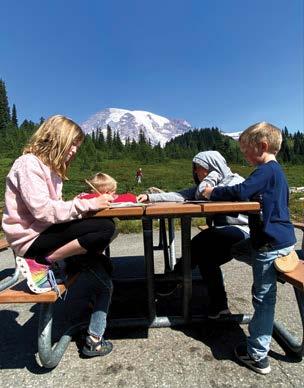
chance to learn about fishing safely and responsibly. He also learned about the parts of a fish, their habitats, and some of the basic rules of the sport of fishing.
The Junior Ranger program makes learning exciting for our kids. They naturally lived out the “I will share what I learn with my friends and family” line of the oath because they were so excited to share their new knowledge with their grandparents, cousins, and others.
While the program is mainly for the kids, we found ourselves learning quite a bit as well. For instance, one of the questions in the Carlsbad Caverns National Park booklet was whether or not bats were blind. We confidently told our kids that they are, but the ranger taught us that they actually aren’t; they just have tiny eyes with sensitive vision. Their eyes allow them to see in dark spaces like caves. We all learned something that day!
Because we were visiting so many parks, getting a souvenir at each park wasn’t reasonable. Instead, our kids treated their Junior Ranger badges as souvenirs. The programs are free at most parks. Yosemite and Great Smoky Mountains national parks were two we encountered that weren’t free, but they still only cost a few dollars per kid.
The National Park Service offers 63 national parks and more than 400 natural, historic, and recreational areas. There’s a good chance that you’re not far from a park in the NPS system even if you don’t have a big national park near you. This can be an excellent way for your entire family to learn about the parks, animals, and history of where you live.
If you need help finding a national park to explore, the NPS app makes it easy. Our family loves looking at the map and discovering new parks across the country. Whether we’re visiting family or on vacation, there always seems to be a national park nearby.
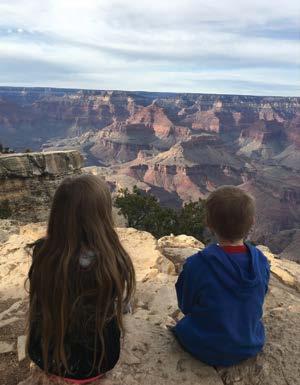
If you’re planning to visit a national park soon, we can’t encourage you enough to check out the Junior Ranger program. It has had a tremendous impact on our kids and their education and helped spark a passion, awareness, and appreciation for nature and conservation efforts.
We’re excited to see how the knowledge and experiences they’ve acquired from the program affect their futures. Whether it’s future careers or hobbies, it’s clear to us that the lessons they’ve learned from the program will have an impact on their lives for years to come. ■
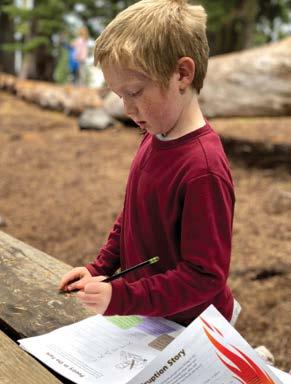
As we considered a possible RV or campervan purchase in 2021, my thoughts were all over the map. Some days, I felt certain the campervan option was the best one for this “nearly-empty nest” phase of life we have entered.

Other days, my more analytical self would rule the internal conversation, pointing out that the price per square foot was outrageous for campervans and arguing a travel trailer or small fifth wheel would be the more practical, responsible decision.
With the total cost being approximately the same when factoring in a truck purchase for the towable, it was a constant mental tug of war. In the end, five factors helped us make a confident decision.
The last five years have seen several monumental shifts in our life. This included transitioning into and out of full-time RV life with our family of five and taking an eight-month hiatus in Hawaii.
But the one thing that hasn’t shifted is my insatiable desire for simplicity. I am always drawn to fewer moving parts, less to maintain, and less that can go wrong.
As we considered a campervan purchase, I couldn’t get away from the feeling that this would be the simplest path forward in our desire to continue exploring after our youngest child had launched, for a few reasons.
At less than 20 feet long, a campervan could easily be parked in our driveway, stocked, plugged in, and ready to roll out of town for an adventure at the drop of a hat.
There’s no additional cost and hassle of storing a larger RV at a separate location and transporting it back and forth before and after trips.
We wouldn’t need two purchases, like a truck as a towing vehicle plus an RV.
There are relatively few moving parts compared to towable RV options.



We also knew we weren’t looking for luxury with this purchase. We were looking for adventure, mobility and the freedom to see a sign as we traveled down the road and say, “Let’s go check that out!” The campervan seemed to tick all of these boxes.
2
Before we bought our first travel trailer in 2017 with the intention of quickly hitting the road full time, I had almost no towing experience at all. In fact, I had never even owned a truck!
After a few months on the road, I got pretty comfortable with it. But backing never got truly easy and always added a layer of stress to the end of a long travel day. That was especially true when we were stuck in a tight space with obstacles.
The reality of avoiding the added stress and the frustration of speed restrictions while towing has been a dream in the campervan. Yup, you just might see me buzzing past you at 75+ mph on the interstate with a stupid grin plastered on my face.
3
With our 50-foot total setup during our full-time RV excursion, I came to think of traveling with the trailer in tow kind of like a game of chess—you always have to be thinking and looking 3–5 moves ahead to avoid disaster.
Maybe you’re wired for this and it’s no big deal. That is not the case with me.
Contrast that large setup with a campervan that’s less than 20 feet long and has a turning radius that rivals my Honda Accord. Basically, our campervan can fit in just about any standard parking space on the planet and navigate any parking lot. How’s that for easy?
Factor in the campervan’s very manageable 9-foot-5inch clearance requirement and we have some stressfree travels ahead. Heck, we can even take her through some drive-thrus for a quick bite without having to leave the driver’s seat!
4
What? You’ve never heard of exploration efficiency? That’s because I just made it up.
I want to see everything we can possibly see out
there in the big, wide world, but I want to do it as efficiently as we can. For that reason, I wanted to take the campervan’s exploration efficiency compared to a towable RV into account.
In my mind, exploration efficiency consists of two main factors—your vehicle’s fuel efficiency and your ability to boondock regularly without any need for electrical, water, or waste connections.
Because the campervan can get 17–18 mpg (more than double what we got while towing a travel trailer) and is equipped with solar panels on top and a second alternator under the hood to recharge the batteries while we drive, it has very high exploration efficiency.
Overall, I expect us to be able to travel at less than half the total cost per mile compared to the travel trailer What did we sacrifice to gain this efficiency? Space and luxury. For us, it’s the right call.

In addition to lower cost of operation, I believe the campervan will retain its value far better than an average towable RV and will be less susceptible to water damage.
The weakest points in most towable RVs are the rubberized roof and the slides, where water intrusion is common. And I’ve learned that when water damage happens, the cost is always, always more than you expect.

Because the campervan is simply a metal cage with a few holes drilled in the top, keeping water out is a much simpler and less demanding chore.

At the end of the day, I feel confident the campervan has a much better chance of retaining its value through the years. The outcome? More money stays in our pockets whether we keep it or sell it.
We strongly recommend renting a campervan for a few nights to get a feel for the space. Our decision to rent a campervan to explore the Big Island of Hawaii for a couple of nights had a big impact on our choice.

Here’s to your next grand adventure! ■
About the Author Todd and Julie Bonner are a couple of adventurous souls who spent 17 months RVing full time with their family of five in a 26-foot travel trailer. Now nearing an empty nest, they’ve transitioned to a campervan that fits their desire for simplicity perfectly. You can follow their wanderings on Instagram @trekkndotco or on their blog at TREKKN.co.
Olympic National Park is a great place to stop for a few days or a few weeks to cap off a road trip up the west coast along U.S. Route 101. The Olympic Peninsula is a place with tremendous natural diversity, a rich history, and more roadside coffee stands (I call them coffee sheds) than your caffeine craving can handle.
My wife, Amy, and I are full-time RVers who work seasonally in and around national parks. We worked in Olympic National Park at Hurricane Ridge for the summer of 2021 and had a summer full of awe-inspiring views and awesome adventures. These are our tips for planning a trip to Olympic National Park
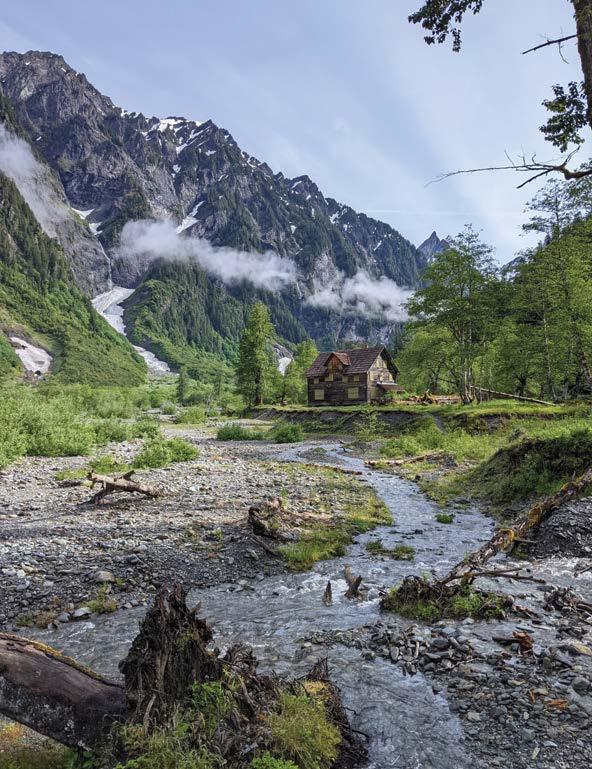
● Home to 60 named glaciers
● 95% of the park is designated as wilderness

● Contains 73 miles of wild coastline
● Protects the largest herd of Roosevelt elk in the world
Marymere FallsGetting to Olympic requires a drive up U.S. Route 101 from the south, whether you’re following the coast up or making your way north from Mount Rainier. If you’re coming from the Seattle area, traveling around the Puget Sound is an option with a beautiful drive, but for something a little different, try the Edmonds-Kingston Ferry. When you’re planning your drive around Olympic, keep in mind that there are no roads that go through or over the Olympic Mountains. You have to go around, mostly by following U.S. Route 101. Port Angeles is the biggest town on the Olympic Peninsula and the best place to get groceries or anything else you may need. A grocery store and a few restaurants are available in Forks as well.
If you’re looking for the best campsites, you’ll need to plan ahead. Campgrounds operated by the National Park Service are generally first come, first served, do not have hookups, and have mostly small sites not suitable for large RVs. Be sure to check the park website for reservation options and potential campground closures.
For a site you can reserve, or for sites with hookups and more space, check out the campgrounds at Sol Duc Hot Springs Resort or Log Cabin Resort. Elwha Dam RV Park is a good option as well. For a scenic campground a little off the beaten path, check out the campground at Salt Creek Recreation Area.
For those with a smaller footprint and no need for hookups, consider the Washington State Department of Natural
Resources (DNR) campgrounds. Before your trip, order a Discovery Pass online from the Washington State DNR. It will allow you access to multiple DNR campgrounds throughout the state with no nightly fee, as well as state forest land for dispersed camping. Some of the DNR campgrounds are located in prime locations that make them a great base of operations for a multi-day adventure around the park.
After you’ve found a place to camp and scoped out your favorite coffee shed, it’s time to explore the park. Here are five places you won’t want to miss.
Hoh Rainforest, Hall of Mosses: 1 mile loop, easy (gravel) This trail goes through an old growth forest with huge trees covered in mosses of many varieties. The trees are large and tall, but their branches droop with the weight of hanging mosses. Kids will undoubtedly be excited to point out every banana slug along the way as well. To extend your hike or to get away from the crowds, take a walk down the Hoh River Trail. The Hoh Rainforest is a heavily-visited destination, so get there early in the morning—before 8 a.m. in the busy summer months—to avoid long traffic delays getting to the Visitor Center and trailheads.
Hurricane Ridge, Hurricane Hill Trail: 1.6 miles one -way, easy (paved) The subalpine environment and beautiful views of craggy peaks are enough to make any visit to
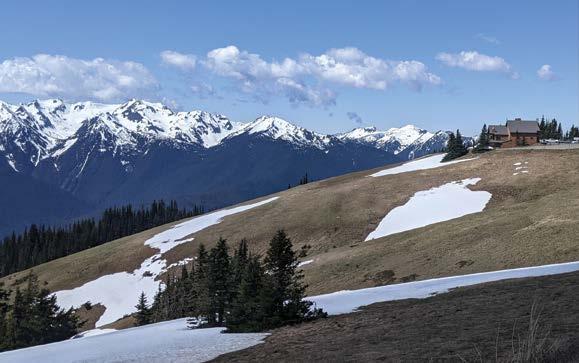
Hurricane Ridge well worth the trip up the winding 18-mile road that brings park visitors from near sea level in Port Angeles up to approximately 5,200 feet. RVs will need to stop at the Hurricane Ridge Visitor Center parking lot, but smaller passenger vehicles can continue on the road where it narrows past the main parking area and park at the trailhead for Hurricane Hill Trail.
Hurricane Hill Trail leads you along subalpine ridgelines with great views of the Olympic Mountains. At the end of the trail, after gaining approximately another 500 feet in elevation, you will come to the top of Hurricane Hill. On a clear day, the view is nothing less than extraordinary. You can see down to the Salish Sea (Strait of Juan de Fuca), the town of Port Angeles, the San Juan Islands, and several other notable land formations and geographic landmarks.
For a longer, more strenuous trail that has great views and far fewer people, check out the hike to Klahhane Ridge. Finding the trail can be challenging, so stop at the Hurricane Ridge Visitor Center for more information.
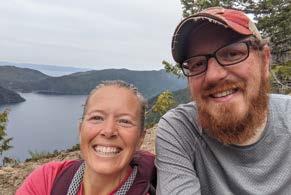
Rialto Beach: 1.5 miles one-way, easy If you ask 10 different people what their favorite beach in Olympic is, you will get 10 different answers, and they will all have good reasons why. For a great day hike, check out Rialto Beach. Hike 1.5 miles north along the beach from the parking area to get to Hole in the Wall, a natural arch that stretches out into the ocean. At low tide you can walk out to Hole in the Wall, and through it. Spend some time looking around the tide pools for sea stars while you’re there.
Sol Duc Falls: 1 mile one -way, easy Olympic National Park has no shortage of waterfalls, but Sol Duc Falls is a must see. Only about a mile from the trailhead, Sol Duc Falls is a great waterfall to hike to with the whole family. Walk across the bridge over the Sol Duc River and feel the mist from the falls. The lush forest surrounding the narrow gorge and waterfall makes this an excellent spot to snap a few photos. As you leave Sol Duc, stop at Sol Duc Hot Springs resort for a dip in one of their three pools, each maintained at a different temperature and fed by the Sol Duc River and a natural hot spring.
Lake Crescent: distance and difficulty varies No visit to Olympic National Park is complete without a stop at Lake Crescent. The 600-foot-deep lake is strikingly picturesque from any angle. Several turnouts along U.S. Route 101 provide great spots for photos. Most of the hiking trails near Lake Crescent begin at the Storm King Ranger Station. For short hikes, check out Marymere Falls and the Moments in Time trail. If you’re looking for a strenuous hike with a great view of the lake and surrounding mountains, try the Mount Storm King trail. For a close-up view of the incredibly clear waters of Lake Crescent, you can drop in your canoe or kayak at the boat ramp near Storm King Ranger station, or rent one from Lake Crescent or Log Cabin Lodges.
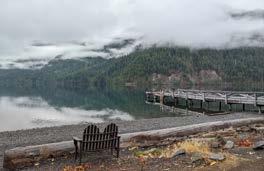
There’s plenty to do in Olympic National Park, but if you’re looking to get a little further from the crowds for a night or two, do some backpacking while you visit. Olympic National

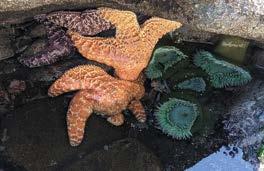 Coastal Wildlife
Beach Hiking
Mt. Storm King Trail and Lake Crescent
Coastal Wildlife
Beach Hiking
Mt. Storm King Trail and Lake Crescent
Park is 95% protected wilderness, so huge portions of the park can only be accessed by taking overnight and multi-day backpacking trips. For a solid day hike or an easy overnight backpacking trip, try the Ozette Triangle Trail. Avid hikers and experienced backpackers will enjoy the High Divide and Seven Lakes Basin loop, Lena Lakes, and Enchanted Valley. Overnight backpacking in the park requires a permit. Permits for popular backpacking routes can be difficult to get at the last minute and they must be obtained online at recreation.gov.


☐ Keep your plans flexible. Rainy, foggy days are common, but that kind of weather doesn’t have to ruin your plans. In fact, rain and fog can enhance your experience on some hikes.
☐ Check out the rainforests on a rainy day. When it’s clear and sunny, take a drive up to Hurricane Ridge.
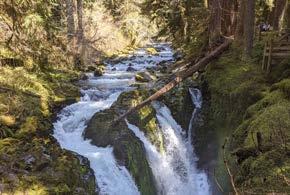
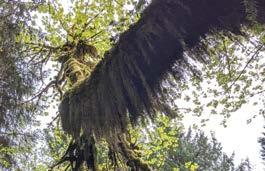
☐ Most of the beaches are best at low tide. Search “La Push tides” on the NOAA website for coastal tide predictions, or inquire about tide times at the Olympic National Park Visitor Center in Port Angeles
☐ Due to weather or other unforeseen circumstances, some parts of the park may be closed or only accessible by foot at any given time.
If you’re planning a visit to any national park, check the website for alerts about closures before you go. The NPS app is another great tool full of useful information about the parks.
Cell service can be spotty on the peninsula, so you’ll want to download anything available in the app pertaining to Olympic National Park before you visit. When you get to the park, stop by the visitor center in Port Angeles. The staff there is ready to help with any questions and give you the latest information on conditions throughout the park.
There’s no place on earth quite like Olympic National Park. Swing by your favorite coffee shed and hit the trails— mountains, rainforests, wilderness, beaches, lakes, and waterfalls are all there waiting for you to explore. ■
About the Author
Josh Fuss and his wife, Amy Rupp, are the nomadic couple behind the travel blog Chasing Harley. Amy takes photos and Josh writes to document their travels while working seasonally in national parks and living full time in their truck camper. Follow along with them on Instagram @chasingharley.
 Sol Duc Falls
Lake Crescent Area
Sol Duc Falls
Lake Crescent Area
If you haven’t participated in an RV rally, meetup, or gathering, you are missing out on perhaps one of the most entertaining and beneficial parts of RV travel. Whether you travel full time, part time, or some of the time, RV rallies have something for you. Many RV clubs have a huge annual rally, plus multiple smaller ones in various locations throughout the year. Big annual rallies can have 1,000 or more rigs, while smaller meetups might be limited to just 20 or 25. There are events at full-hookup sites and boondocking sites; meetups for solo travelers, families, and vanlifers; and even some based on the brand of RV you have. Grand Design and Winnebago have huge rallies for owners of their coaches each year
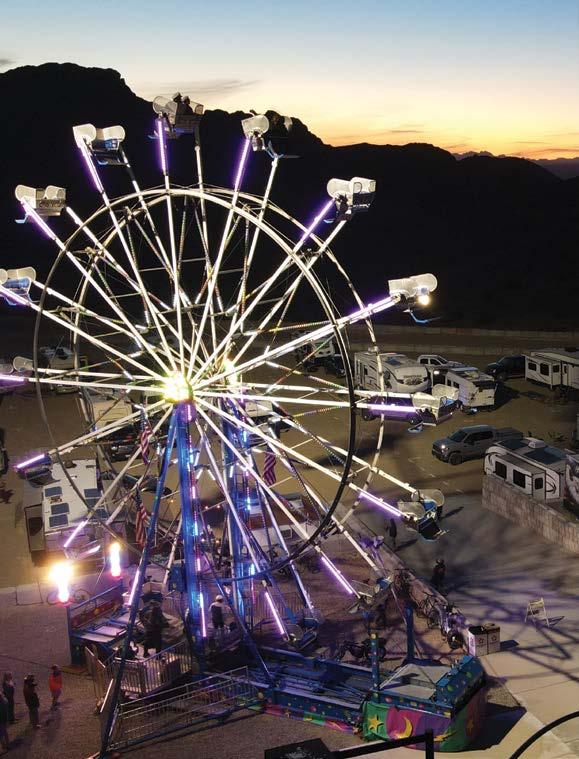
So, what’s in it for you? An RV rally is much like life in general in that you get out of it what you put into it! What you’ll get out of it can also be affected by your circumstances—for example, whether you’re full or part time, and whether you’ve been on the road for years or are just starting out. No matter your situation, you will find there is something for everyone.
Making connections on the road—Just like when you bump into a neighbor you haven’t seen in a while and end up talking for an hour, when you’re on the road, you will most likely bump into other RVers you have met at one point or another at an RV park, meetup, or rally. Next thing you know, you’re making plans to camp together! Having a network of friends on the road is just as important as having connections with people in your neighborhood, and RV rallies help to facilitate this.
Entertainment— RV rallies have great entertainment, which is a perfect opportunity to hang out and bond with fellow RVers. With live bands, comedy, and interactive games, RV rallies are for more than just meeting great people; you can also share experiences and a good time with your RV community. Finding people in similar situations—There are many different types of RV travelers. Rallies will have all kinds of people, including solo travelers, families, retired folks, remote workers, those who travel in vans, motorhomes, or fifth wheels, and those who travel full time, part time, or some of the time. There are so many different reasons and ways people RV, but with so many people around, you are bound to meet someone in a similar situation as you
Great seminars and workshops—Maybe you travel part time but are considering going full time at some point in the future. Many RV rallies will have

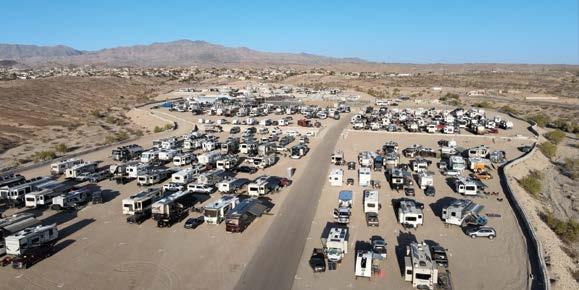 Xscapers Annual Bash January 8–16, 2022 in Lake Havasu, Arizona
Xscapers Annual Bash January 8–16, 2022 in Lake Havasu, Arizona
educational workshops you can attend, from route planning, including Canada and Mexico, to solar, boondocking, maintenance, and more. Attending these seminars can help you plan your travels and become more confident in going full time. Sure, you can watch YouTube videos and take notes, but nothing works quite as well as being there with people who have done it, allowing you to ask specific questions about your situation and get instant answers. Education may be the biggest reason a new RVer would want to attend an RV rally.

Learn how to get remote work— Perhaps you’re ready to start working remotely from the road, like so many others have done in the past couple of years. I can assure you that when you attend an RV rally, you will see many other people doing the same thing. The best way to learn about working from the road is by talking to those who have already done it, and it won’t be hard to find them. Plus, the seminars and marketplaces that are usually found at RV rallies can help you find the right setup, Internet connectivity, and even a job that is friendly to RV travel. The Escapees RV Club has a job board with many remote job opportunities. Check out the marketplace trade show — Many RV rallies have a marketplace or trade show set up with vendors showing off their new tech, gadgets, and offerings. This is a great place to stock up your rig with RV-friendly products. Stocking an RV isn’t like stocking things for your house; space savings and space planning are vitally important, and you will find some really cool space-saving gadgets at these marketplaces. You can also look into RV-specific travel benefits, such as membership organizations, health insurance, and other services for full- and part-time RVers.

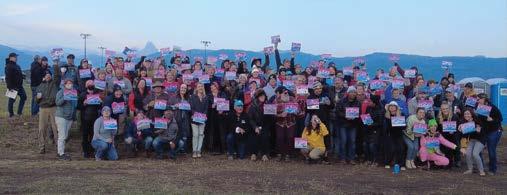
On-site mechanics—Scheduling service for your rig might be one of the hardest things to do as a fulltimer, and if you travel with pets it can be even more difficult. Many larger RV rallies have mechanics on site who can perform a variety of services, including solar installation, awning repair, and many types of regularlyscheduled maintenance, with no need to leave your rig or be taken off the road. Often, you will need to make an appointment before the rally, so be sure to look into that in advance. Many great mobile repair RV specialists sponsor RV rallies, so reach out to them to get on the schedule.
Pass along your knowledge— If you’ve been on the road for a while, you may feel you’re too experienced for the seminars or that you’ve heard it all. In that case, have you considered speaking at one? Many rallies look for volunteer speakers to share their experiences and host roundtable discussions and forums. You can pass along your knowledge to newer RVers and help them become more confident in their skills and abilities. One last tip— RV rallies are packed with activities, and are often heavily reliant on volunteers. When you attend your next rally, be sure to give a big shout out to the volunteers who show up early, stay late, stripe parking lots, direct traffic, assemble tents, prepare gift bags, pour drinks, set up tables, and more. And if you really want to get involved, sign up to volunteer! You may be able to get in early and perhaps even make some great new friends along the way. ■
About the Author
Stuart is a solo full-time RVer traveling in a Super-C RV with his two cats, Izzy and Camden. He is the new owner of Full Time Freedom Week and RV Dreaming, and chronicles his journeys on his YouTube channel called Claim The Vision.
Not sure which gizmos and gadgets are a necessity for your RV and which ones are just nice to have? Start here!
When it comes to water, fire, and electricity, be prepared and stay safe on the road with some of the product recommendations on this list. More concerned about comfort? Don’t worry, we’ve included a few “nice to haves” too.

Just stepping out really quick? Heading out for the day and wanting to pack light? If so, the last thing you want to do is carry a bulky keyring with you. This keyless lock kit comes ready to install and includes two key fobs It even has an option to silence the beeping, which we know your campground neighbors will appreciate.
Love sitting around a big burning fire at night, but hate smelling like smoke afterward? Check out the Solo Stove. While many developed campgrounds already have a designated fire ring, people who own a Solo Stove absolutely love it! Its design eliminates nearly all smoke, and it keeps the fire burning long and bright into the night.

Lightweight but powerful, this portable power washer allows you to clean anything anywhere. The Power Pro Max Portable Pressure Washer runs on rechargeable lithium-ion batteries, which means no cords to get tangled up in and no fuel tanks to haul around. The nozzle rotates, and the 6-in-1 sprayer allows you to choose the right spraying action for each cleanup job.
And it’s not just for use on your RV—you can use it to clean everything outside, including boats, kayaks, camping gear, piers, fences, decks, sidewalks, and siding! The end of the hose is submersible, so just drop it in a bucket of water (or nearby lake), then spray and wash. Each power washer also comes with a 25-ounce attachable soap bottle to make cleaning even easier.
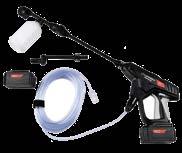

Want a chair you can comfortably sit in all day? This is it! Don’t let its massive size fool you; it folds up into a convenient carrying bag with handles. What it lacks in footprint, it more than makes up for in comfort.
EMS-PT50X
–Robb Strobridge, The Stromads RVer Robb Strobridge’s Super C is an all-electric coach. To avoid significant electrical damage or even a catastrophic fire from bad electrical connections, he carries the EMS-PT50X from Progressive Industries.
After plugging in, your electrical connection is evaluated for various potential problems, from faulty or improper wiring to high and low voltage spikes and surges. The digital display will alert you with a specific code if there’s an issue and disconnect the power if necessary.
“This EMS has saved us a couple of times from incorrect wiring and low voltage,” said Strobridge. It’s available in several sizes and styles, including portable and hardwired, to accommodate your needs.

Have a product you love? Tell us about it! Email: collab@rvtoday.com and your product review may be featured in an upcoming issue of RV Today.
Expand your campsite options with this little gadget, also known as a dogbone. If your rig operates off 30 amps and your campsite is for 50, just plug this baby in and you’re good to go. It is a helpful adapter to always have on hand.
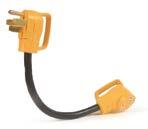
“The most comfortable camping chair we’ve ever owned!”
– Nikki Kirk @hustlehighway
“It’s like taking your electrician with you!”
Keep things cold on the road without constantly replenishing ice. The Dometic CF 110 cools down to 0 degrees. It is single zone and operates off AC or DC power. This cooler has a low power draw, so will also work well running off solar. It is one of the go-to coolers for RVers, vanlifers, and car campers alike.
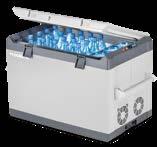
If you’ve ever heard of anyone who has lost their rig due to a fire, you know how quickly an RV can go up in flames. Proteng offers an automatic fire suppression device to protect your assets, as well as your loved ones. Each device is customizable to the area you are trying to protect, so they will build a package specifically for your rig. The device deploys on its own and is safe for people, pets, and the planet.
When it comes to filtering water for drinking, it doesn’t get any better than a Berkey. When installed properly, Berkey water filters remove more than 200 harmful contaminants. This travel size is perfect to take along with you on any adventure, and the 1.5-gallon tank won’t take up much room in your rig either. Bring this little guy along with you and never run out of pure, clean drinking water anywhere you go
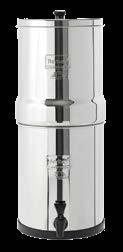

Want to make sure your RV stays in place while you head out to play? The Trimax chock lock installs in seconds, has a universal fit, and gives you peace of mind while you’re away. This is basically a wheel lock with a built-in chock. It comes with two keys, has an adjustable fit for width, and will ensure no one takes off with your rig. ■


Stay connected with fellow RVers at these 2022 events
MAY
Mount Saint Helens Vintage
Trailer Rally
May 5–8
Centralia, WA
Fulltime Families RV Family Summit
May 9–13
Virtual Event
Wyoming Outdoor Weekend and Expo
May 20–21
Lander, WY
JUNE
Missouri Loves Company Vintage
Camper Rally
June 2–5
Leasburg, MS
Tampa Bay Summer RV Show
June 9–12
Tampa, FL
Country Thunder Music Festival
June 10–12
Forest City, IA
JULY
Overland Expo Pacific Northwest
July 8–10
Redmond, OR
Open Roads Festival
July 15–18
McCall, ID
Silver Avion Fellowship Rally
July 21–24
Elkhart, IN
AUGUST
Rootless Living Magazine Digital Nomad Meetup
August 5–7
Elkhart, IN
Loners On Wheels Border Low Meetup
August 10–14
Marshall, TX
Midwest RV Super Show and Sale
August 11–14
Elkhart, IN
SEPTEMBER
Rainbow RV Labor Day Rally
September 2–5
Bodega Bay, CA
Adventure Van Expo
September 3–4
Redmond, OR
Hershey America’s Largest RV Show
September 14–18
Hershey, PA
OCTOBER
RVing Women Solo Travelers
Campfire
October 4
Virtual Event
Overland Expo East

October 7–9
Arrington, VA
Myrtle Beach RV Show
October 21–23
Myrtle Beach, SC
Events listed are a courtesy to our readers, with dates and details subject to change. For more information, contact the event organizers directly. If you want your next event listed here, please email info@rvtoday.com.
Karla Locke
Kimberly Crossland
Kevin Skelton
Katherine Williams
Derek and Lacey Green
Josh Sipma
Jack Huber
Adam and Kathryn Frazer
Beth Cronin
Matthew Fry
Todd and Julie Bonner
Stuart Takehara
Josh Fuss
Amy Rupp
Kevin Skelton – All Things Solar

Kevin and his wife Christine have been traveling with their two young kids in a fifth wheel for the past four years. He designed and installed their 2,625-watt solar system and shares what he learned in the process, along with their travels and other RV tips, on their Never Stop Adventuring YouTube channel and website, neverstopadventuring.com

Matthew Fry – The Junior Ranger Program

Matthew and Jacklynn hit the road full time in December 2019 with their three kids. They traveled to 49 states before settling back down in Nashville, Tennessee and plan to continue the adventure by making memories as a family in and around Middle Tennessee. You can follow their adventures on Instagram and Youtube at @away.we.roam
Beth Cronin – How to Put the Glam in Glamping
Beth and Eric have been traveling for more than five years in their restored vintage Serro Scotty Camper. Their passion for restoration and design drives them to maintain and enhance their home on wheels. You can find them on Instagram @vintageglampers
Kimberly Crossland – Don’t Put Adventure in a Box
Do you have a story idea, product you love or campground to highlight? Let us know at collab@rvtoday.com
Kimberly is the founder of Roadpreneur and Cruisin’ + Campfires, companies designed to keep families living in freedom through travel and entrepreneurship. You can find her seeking new adventures with her boys @cruisinandcampfires or her website cruisinandcampfires.com

A couple cooking in their early 1900s motorhome
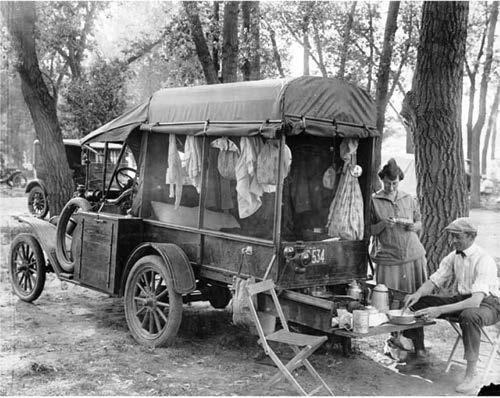 Photo Credit: RV/MH Hall of Fame and Museum
Photo Credit: RV/MH Hall of Fame and Museum











